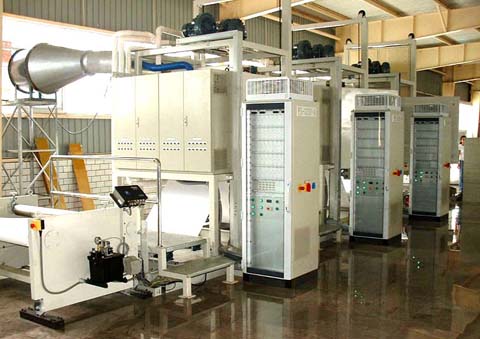
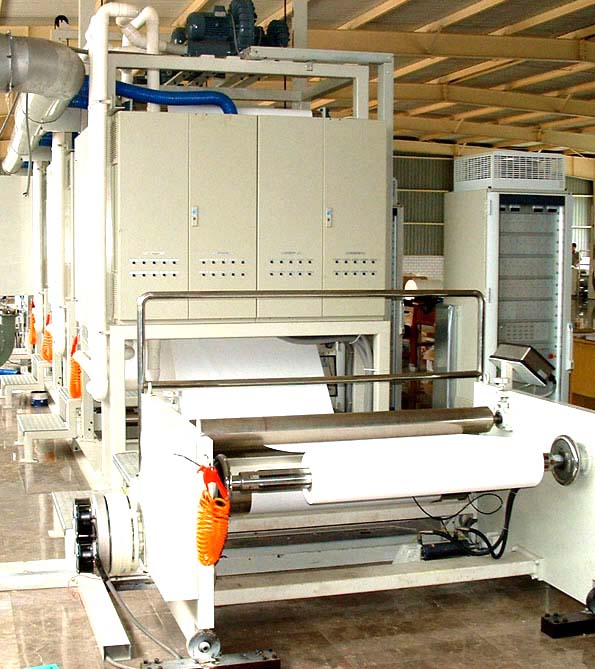
IPM - International Perforation Management
high-tech engineering - Germany - Thailand - China
tel/fax: 0049-3212-5375175
http://www.microperforation.com
http://www.microperforation.com.cn
http://www.deguodaguan.com/ipm/
Email: grosse microperforation.com - perforationpeople web.de
copyright Werner Grosse Patent download http://www.microperforation.com/englishengineerreport.html main link http://www.microperforation.com/ipm-technology.html IPM PORTFOLIO ENGLISH IPM PORTFOLIO SPANISH anti counterfeiting laser solution MLL-1
Micro Cluster Patent Technologies
MLL-1 micro laser line perforation real alternative for galvanometer scanner, cluster micro technology for hole pattern, perforation design, waves, zigzag or packages lines, cryptograms, company logos, holograms, anti counterfeiting, security paper, safety, bank note, metal sticker, printing, laminating, coating, credit cards, transparent films, holographic paper, cigarette, tipping, filter, aluminum foils, shrinkable films, tear tapes, labels, cardboards, bar or matrix codes, marking, scribing, jewelry, automotive, pharmacy, golf, smoking, chemical or medical product, electronics part, indicators, porosity contours or profiles, embossing, bioengineering, membrane, filtration, focus, holographic, hinge-lid, pack, hole, porous, hole, line, micron. Patent pending for process, device, product property DE102004012081.
LPM-1 micro laser perforation at wide web, large area, surface or whole material cluster treatment, cutting, welding, drilling, ablation, cleaning, melding, high power dual rotation laser beam splitter, twin multiplexer level, 4/6KW optical input, flexible hollow fibers, 200 output channels, Co2, Yag, Excimer, UV, emission. Material treatment and robotic handling for stainless steel, ceramic, aluminum, wafer, gold, glass, silver, brass, copper, titanium, diamonds, jewelry, silicon, solar, panel, photovoltaic, micromachining, slitting, rewinding, refining machines or stand along systems. Patent granted for process and device DE102004001327.
Nano Micro perforation or other material including surface treatment, electrostatic nano micro cluster perforation for cigarette, tipping, filter, packaging, plug wrap, Kraft, cement sack, bag, fine and other paper, silicon or other coatings, certain plastic films, laminates, porosity from 80 up to 2500 Coresta Units, from 20 down to 6 Gurley, hole sizes from 50 nm up to 100 microns, hole densities from 80-260 h/cm2, zone widths from 2.0-6.0 mm, up to 16,000,000 holes per Second, web speeds up to 500 m/min, web widths up to 2000 mm. Patent granted DE10328937.
Twin AC/AC, AC/DC frequency shift converter high power, high frequency, high voltage, ultra short mega peak current, electro static nano or micro cluster perforation, ignition, sparking, arc, cigarette, tipping, filter, fine, packaging, paper, plug-wrap, sack, bag, Kraft, food, plastic film, foil, textile, fabrics or other products, switching converter, compressor, emergency, train, ship or vessel power supply, generator, fuel cell, upward, downward, frequency shift switching unit, gas, slab, laser, diode, stack, fiber, beam, material, hybrid, plug-in, car, battery, lithium, Ion, renewable, energy, wind, solar, panel, technology, recycling, medical equipment, membrane filtration, robotic, photovoltaic, industrial automation, drives, IGBT, MOSFET, tube, rf, hv. Patent granted for process and device DE10328937.
Optical online OPSS-1 porovision scanning control system permeability cluster control for electrostatic or laser micro perforation machines, multiple color sensor head, spectral intensity, DSP, FPGA, CCD, line, precise, laser, position, material finger print detection, VIS wave length, opacity, defects, inspection, image control, scanner systems, process software, line, camera, vision control, filter, tipping, cigarette, book, packaging, magazine, bible, wall, Kraft, paper, carton, coffee, tea, food, co-extrusion foils, films, agriculture, cement, domestic or other moving fabrics or web material. Patent pending for process and device DE10251610. China patent granted 200310104764.
Optical in-situ dyne or surface tension control ODSTM-1 at fast moving substrates, plastic, films, foils, tear tape, laminate, co-extrusion, BOPP, LLDPE, PE, PP, PVC, MOV, MOH, FEP, PET, OPP, PTFE, MPET, online, spectral, extinction, monolithic, sensor, analyzing, measurement, wave length, Raman, stray, beaming, water drop, angle, inspection, corona, plasma jet, laser, IR, NIR, scanning, wobbling, stray light, spectrometer, etc. Previous patent application DE19542289.
Patent references http://www.wikipatents.com/gb/2149092.html http://www.wikipatents.com/de/3332886.html http://www.wikipatents.com/de/2918283.html http://www.freepatentsonline.com/EP0460369.html http://www.freepatentsonline.com/7224447.htmlEU technology links
http://www.ircnet.lu/matching/completerec.cfm?BBS_ID=20036&org=391
Title: Micro-laser line perforation for web materials such as paper, metal or other substrates and laser application fields in industry (paper, packaging or cigarette industry) and research (Ref: 06 DE NRXE 0FGK )
http://www.bit.or.at/irca/bbsshow8.php?ref1=06%20DE%20NRXE%200FGK&vQuelle=inna.at
Micro-laser line perforation for web materials such as paper, metal or other substrates and laser application fields in industry (paper, packaging or cigarette industry) and research
http://www.bit.or.at/irc/bbs-show.php?ref1=06%20DE%20NRXE%200FIX&vQuelle=&cc=&eoi=NO
Optical online porosity scanning system
Optical online porosity scanning system
Dual, high-power, high- frequency switching unit for various perforation or other applications to increase operation frequencies and power levels
Off-line laser perforation system and machines for wide-web cigarette tip paper, packaging paper or other material sheets by using a high-power laser multiplexer
Micro-laser line perforation for web materials such as paper, metal or other substrates and laser application fields in industry (paper, packaging or cigarette industry) and research
PowerSourcing Links
http://www.PowerSourcing.com/se/lasermicroholedrilling.htm http://www.PowerSourcing.com/se/laserscanning.htm http://www.PowerSourcing.com/se/laseroptics.htm http://www.PowerSourcing.com/sf/electricalpackaginglinedesign.htm http://www.PowerSourcing.com/sf/packaginglinedesignelectrical.htm http://www.PowerSourcing.com/se/paperproducts.htm http://www.PowerSourcing.com/se/coatedtreatedpaper.htm http://www.PowerSourcing.com/sf/microperforation.htm http://www.PowerSourcing.com/sf/lasermicromachining.htm http://www.PowerSourcing.com/se/machinetoolsinspectionqualitycontrol.htm
Nano Micro perforation - archipelagos of technical possibilities
optical porosity and dyne - surface tension - vision control at fast moving webs


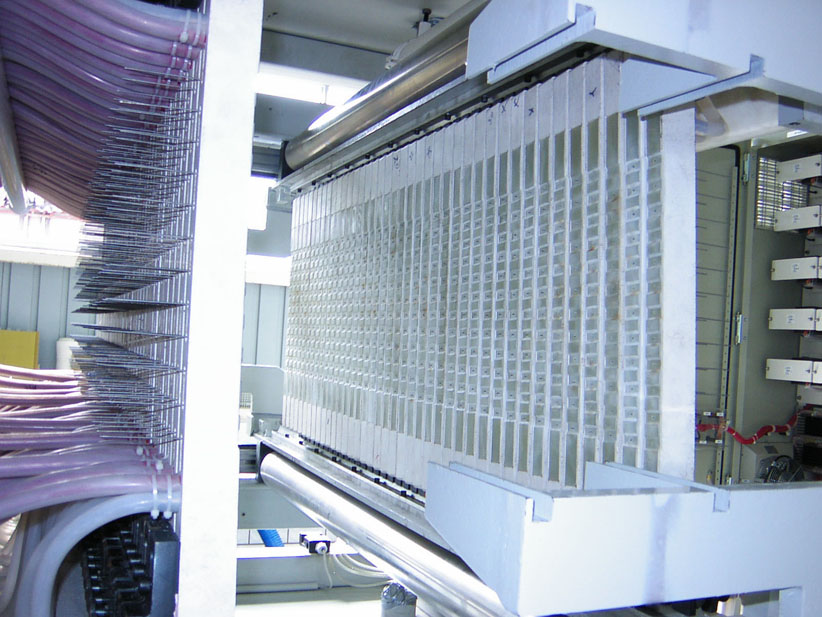
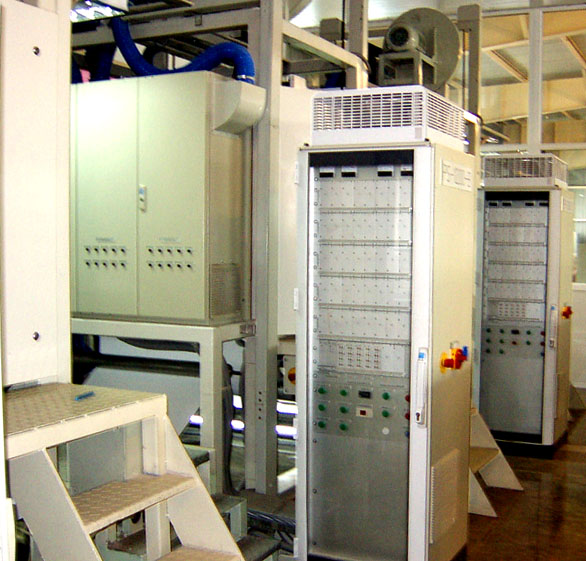
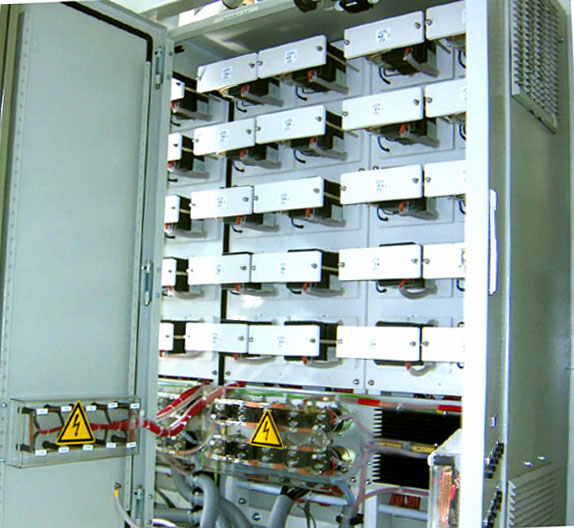
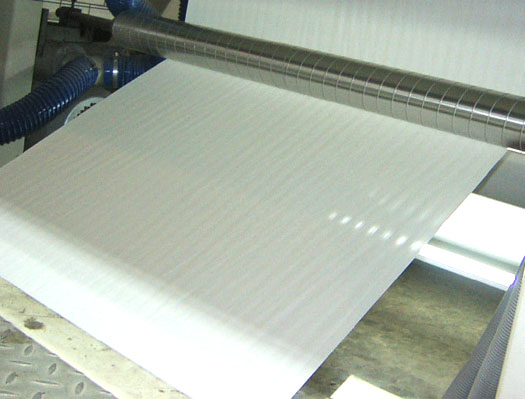
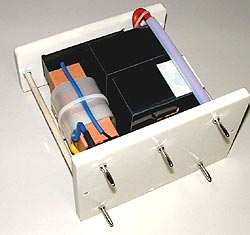
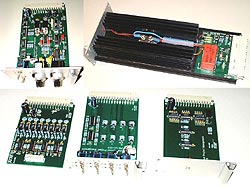
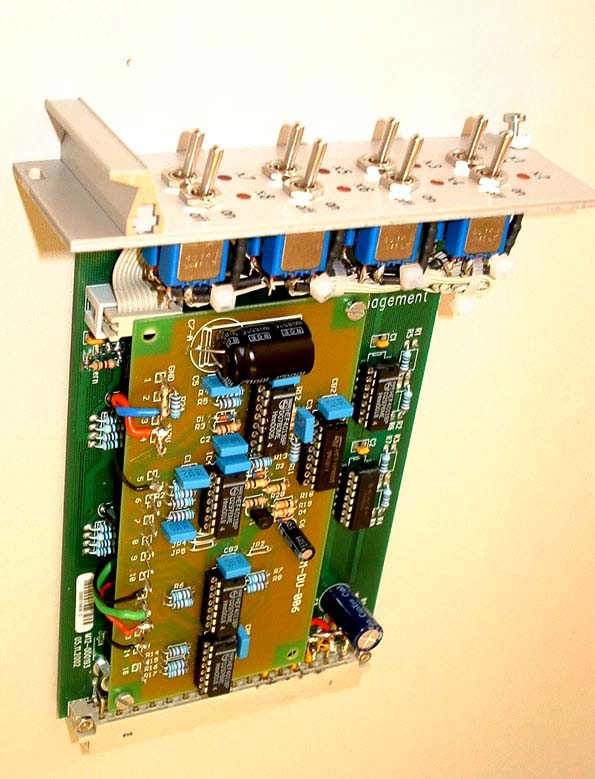
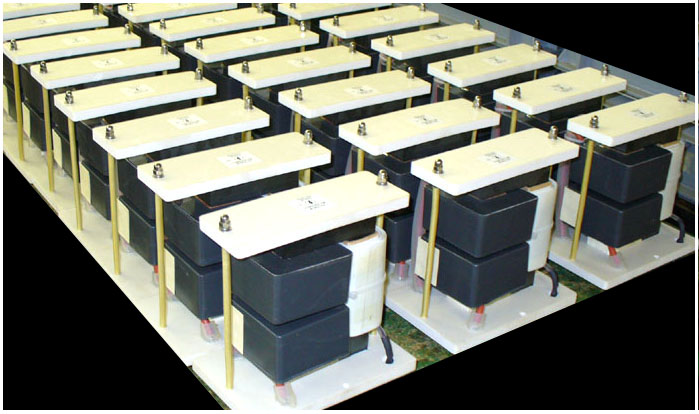

Nano Mikroperforation von Warenbahnen
Für unterschiedlichste Applikationsbereiche werden Materialbahnen wie
Zigaretten-, Mundstückbelag, Filter, beschichtete Spezial, Kraft-, Sack- oder
Verpackungspapiere, Vliesstoffe, spun-bonded Non-Woven, technische Textilien,
Fabrics, Laminate usw. mit Flächengewichten von 20 g/m2 bis zu 150 g/m2
Elektrostatisch – ESP – Nano Mikro oder Laser- oder mechanisch Mikro oder
Makroperforiert.
Unter elektrostatischer NANO MIKRO PERFORATION sind statistisch unregelmäßig verteilte, in der Größe um ca. 50 % variierende und analog hierzu unter LASER oder Mikro/Makro mechanische PERFORATION, gleichmäßig angeordnete und im Durchmesser etwa gleichgroße, nach Möglichkeit runde, gradfreie Löcher und Lochreihen verschiedenster Anordnung zu verstehen.
Die mit dem menschlichen Auge unsichtbaren, elektrostatischen ESP Nano oder Mikroperforationen können flächen- wie auch zonenförmig in bestimmten Abständen innerhalb der Bahnen verteilt sein, wobei erzielbare Lochgrößen sich im Bereich von 1 - 120 um Durchmesser und Lochsequenzen von 1.5 – 16 Million Poren pro Sekunde bewegen. Zonenanordnungen sind in der Regel in Breiten von 2 bis 6 mm und mit Porendichten von 150 - 250 Poren pro cm2 ausgeführt, wobei Flächenperforationen Lochdichten bis zu 2 Million Poren pro m2 generieren. ESP Perforationen ermöglichen Porositätsbereiche von 80 – 2500 C.U., Bahnbreiten von 100 bis 2000 mm bei Bahngeschwindigkeiten bis zu 500 m/min, abhängig von der Porosität und Materialkonsistenz zur Perforierbarkeit.
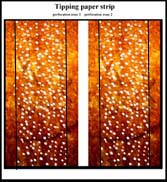
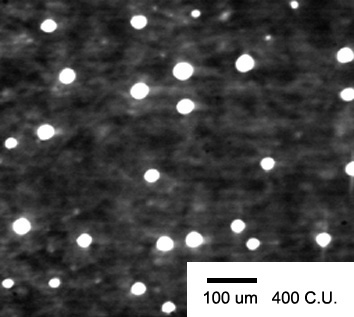
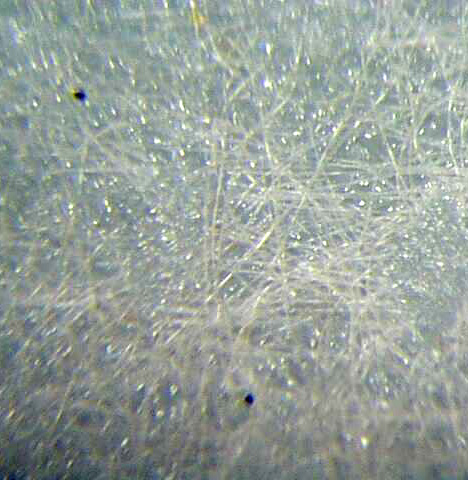
Respektive durch gepulste oder auf geweitet sowie fokussierte Laserstrahlen sind Lochgrößen von 60 - 200 um bei Lochdichten von typischer Weise 10 – 30 Löcher pro cm, Lochsequenzen von 100.000 bis 500.000 Löcher pro Sekunde, bei maximal 32 Laserlochreihen über die Bahnbreite verteilt, möglich. Deren Porositätsbereiche bewegen sich zwischen 100 – 3000 C.U., in der Regel mit Bahnbreiten von 100 – 500 mm bei Bahngeschwindigkeiten bis 600 m/min, abhängig von der Porosität und Materialkonsistenz zur Perforierbarkeit.
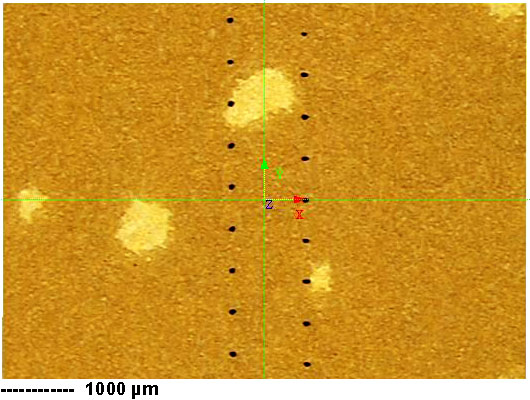
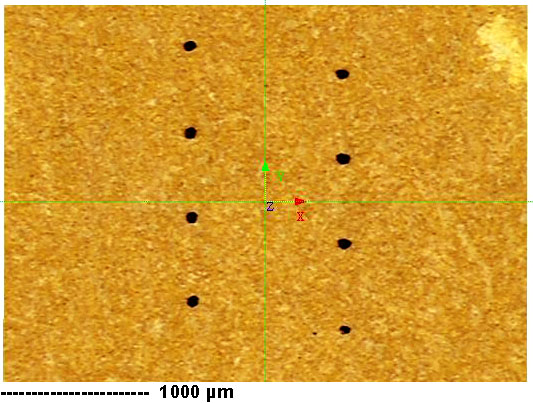
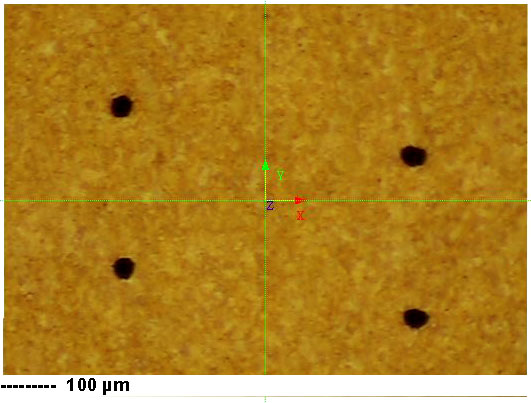
Eine wesentliche Kardinalforderung, die für viele Applikationsbereiche und Produkte mit Vliesstoffen, Sack- oder Verpackungsbahnen, Non-Woven usw. mit einer Gas- oder Wasserdampfdurch- ABER Wasserundurchlässigkeit verbunden ist, finden sich im Anwendungsbereich der ELEKTROSTATISCHEN NANO MIKRO PERFORATIONSTECHNIK wieder, da Wasser aufgrund der höheren Oberflächenspannung die relativ kleinen Nano- oder Mikroporen nicht durchdringen kann. Diese und weitere physikalische Vorteile der relativ kleinen Poren fordern regelrecht den Einsatz der ESP Perforationsmethode, da die Applikationserfüllungen mit anderen Perforations- oder Prozessverfahren NICHT machbar, zu teuer oder unwirtschaftlich sind.
Perforation von Mundstückbelag oder Zigarettenpapierbahnen zur Ventilation von Filterzigaretten
Die elektrostatische ESP Perforation ist seit mehr als 25 Jahren zur
Ventilation von Nichtfilter - oder Filterzigaretten eingesetzt, um einen
gezielten und gesteuerten Luft Bypass, zu erzeugen. Hierzu wird das
Zigarettenpapier für wenige Nichtfilter- oder bei fast allen Filterzigaretten
das Mundstückbelagpapier elektrostatisch ESP OFFLINE oder mit Laserstrahlen in
Zonen oder Lochreihen OFFLINE oder ONLINE perforiert, um Schadstoffanteile wie
Nikotin und Kondensate für die Raucher auf vorgegebene Werte zu reduzieren und
im Weiteren den Ventilationsgrad der Zigaretten gesteuert zu beeinflussen.
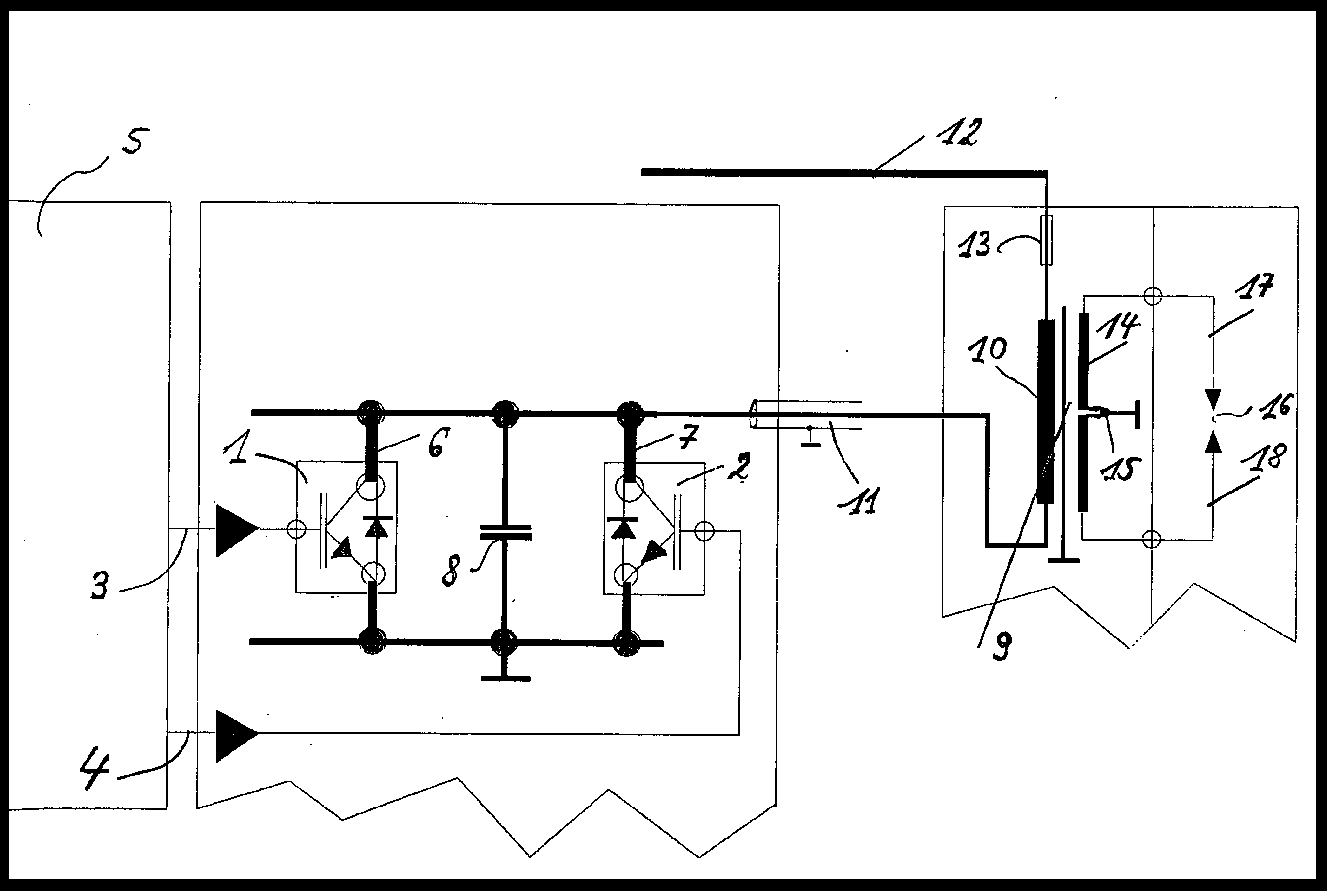
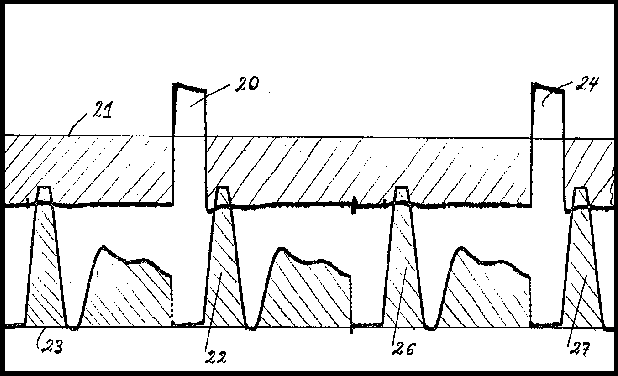
IPM – International Perforation Management – hat verschiedene Laser- und Elektrostatische Perforationsverfahren, insbesondere auch für neue Produkteigenschaften, entwickelt, deren Systeme und Produktionsmaschinen weltweit im Einsatz sind.
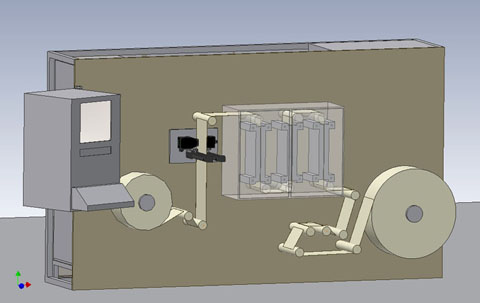
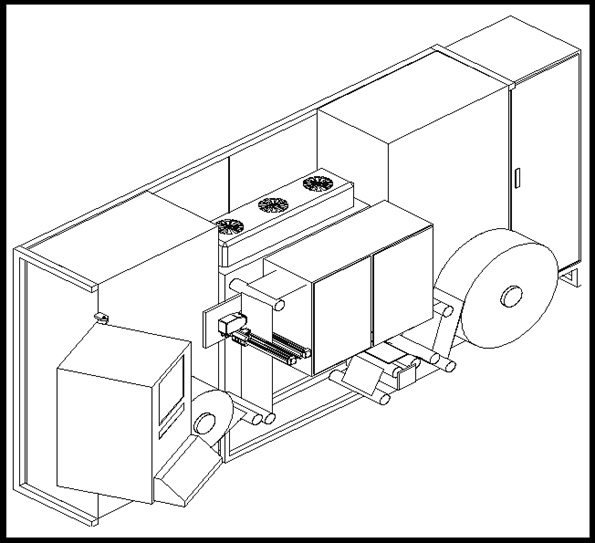

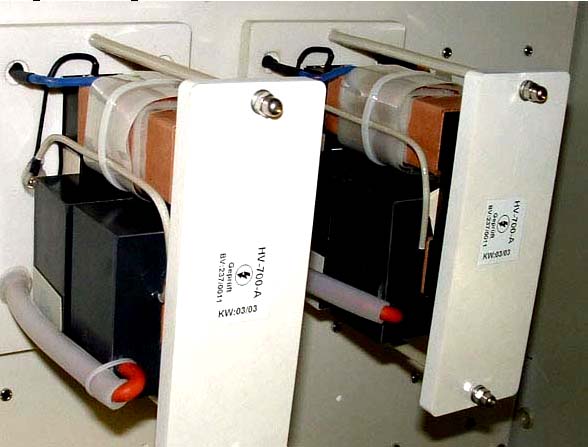
Optische online Permeabilität oder Porosität Messung
Da die naturporösen oder zu perforierenden Bahnmaterialien mit
Bahngeschwindigkeiten bis zu 600 m/min bewegen und in Bahnbreiten bis zu 2000 mm
und mehr vorhanden sind, gestaltet sich eine pneumatische, also bahn berührende
Porositätsmessung, exorbitant schwierig. Hinzukommend sind diese Messmethoden
mit den Nachteilen der Bahnzugserhöhung, des Materialabriebs, Faltenbildung,
Undichtigkeit im Messkopfbereich, starken Verschmutzungen, Nichtlinearitäten und
Kalibrierungsschwierigkeiten stets verbunden.
Daher bieten sich optische Messverfahren zur Transmissionsmessung als Funktion der pneumatisch-statischen Gasdurchlässigkeit für naturporöse oder Nano, Mikro bzw. Makro perforierte Bahnen an. Dabei sind die gestellten Anforderungen aufgrund der eingangs genannten Produktverarbeitung und online Kontrolle, extrem kleinen geometrischen Porenabmessungen, relativ hohen Bahngeschwindigkeiten und guter Messwertreproduktion mit der optischen Porositätsmesstechnik in idealer Weise zu lösen.
Hierzu hat IPM International Perforation Management eine Reihe neuer, patenangemeldeter optischer Messverfahren und Systeme in stationärer oder traversierender Ausführung entwickelt, die weltweit im Markt eingeführt sind.
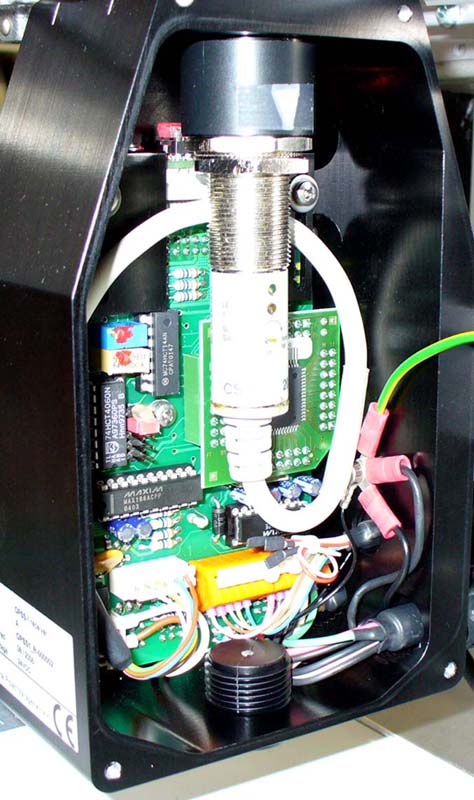
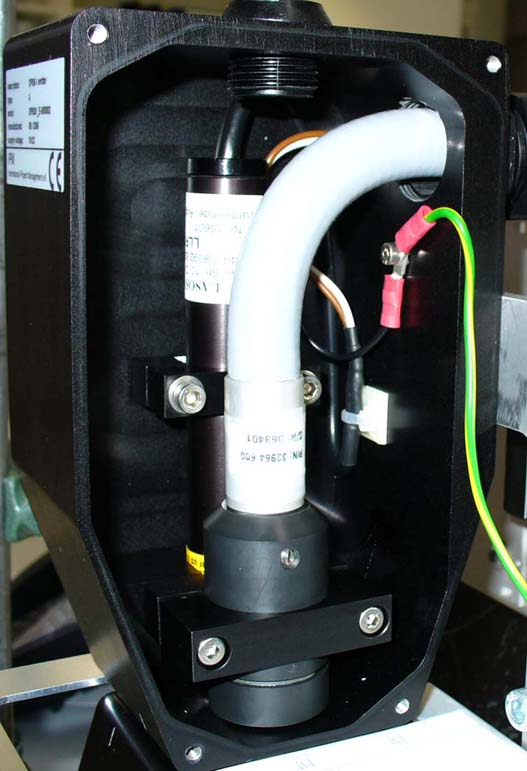
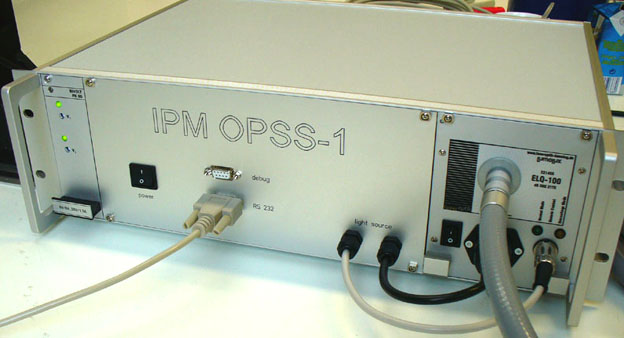
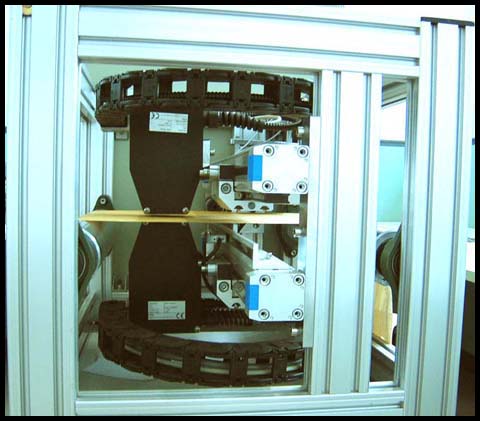
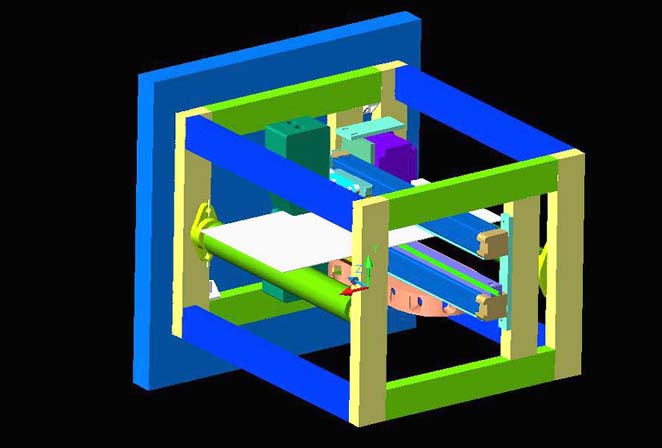
Zukunftsperspektive
Die elektrostatische ESP Nano- oder Mikroperforation findet vorzugsweise ihre Anwendung in Bereichen der Veredelung von Feinpapieren, Verpackungsbahnen, Vliesstoffen, Non-Woven, Filter-, Sack- oder Kraft- sowie Spezialpapiere verschiedenster Art, insbesondere bei der zusätzlichen Behandlung von Bahnmaterialien zur Erzielung besonderer Eigenschaften, welche aus physikalischen oder prozesstechnischen Gründen NICHT mit anderen Verfahrenstechniken erreichbar sind.
Die state-of-the-art, industrietaugliche und im Dreischichtbetrieb zuverlässig arbeitende ESP Perforationstechnik, deren Integrationsmöglichkeit in vorhandene Umroller- oder sonstige Bahnlaufanlagen sowie auch als völlig eigenständig arbeitende Perforationsmaschinen möglich sind, wird zukünftig neue Anwendungsbereiche erschließen und Produkte mit besonderen Eigenschaften entstehen lassen.
Perforationsbeispiele Verpackungsbahnen
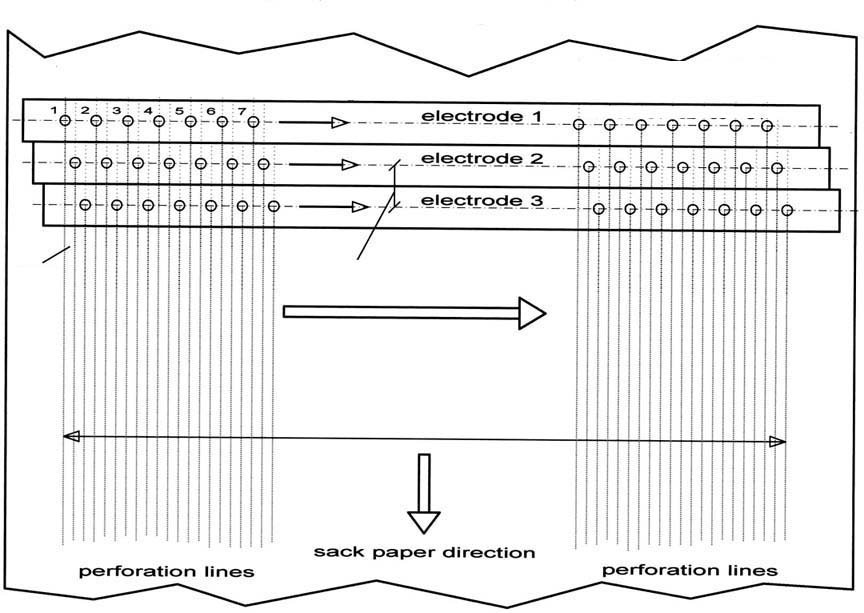
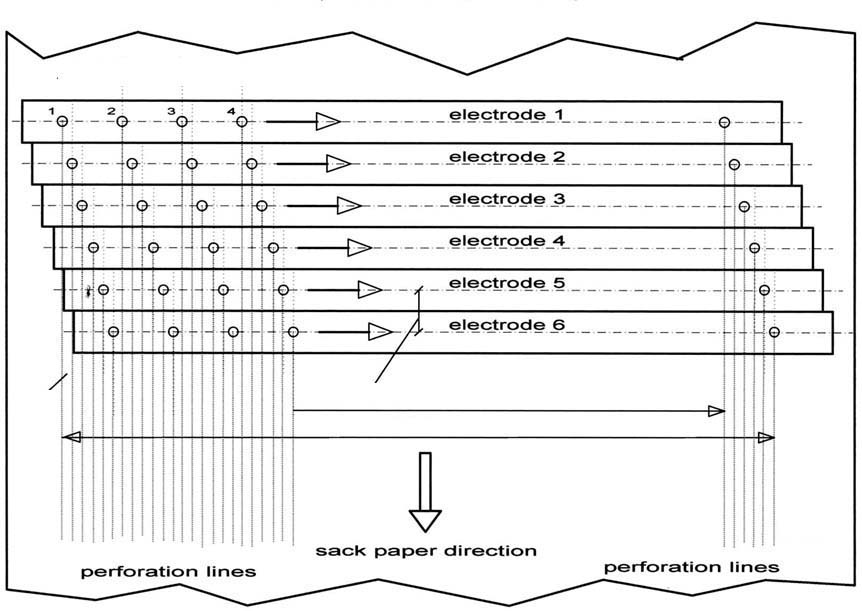
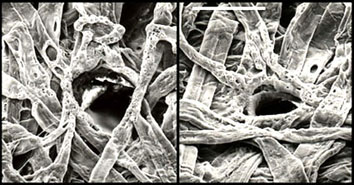

Berechnungen Flächenperforationen
Grundformeln zur praktischen Auslegung einer Anlage
Formelzeichen
Berechnungsbeispiel
Zusammenfassung
Nur die elektrostatische Mikroperforation ermöglicht durch fein dosierte Energieeinkopplung und Funkenkanalerzeugung eine nano oder mikrofeine Ventilation für Packmittel mit erhaltenen Barriereeigenschaften, Schaffung von Atmungseigenschaften für Domestik- und Massenprodukte, industrielle oder medizinische Nano oder Mikromembranen mit Mikrocluster, Vliesstoffe und insbesondere Papierbahnen verschiedenster Art bei relativ großen Bahnbreiten und Transportgeschwindigkeiten, welche aus physikalischen oder prozesstechnischen Gründen nicht mit anderen Verfahrenstechniken erreichbar sind.

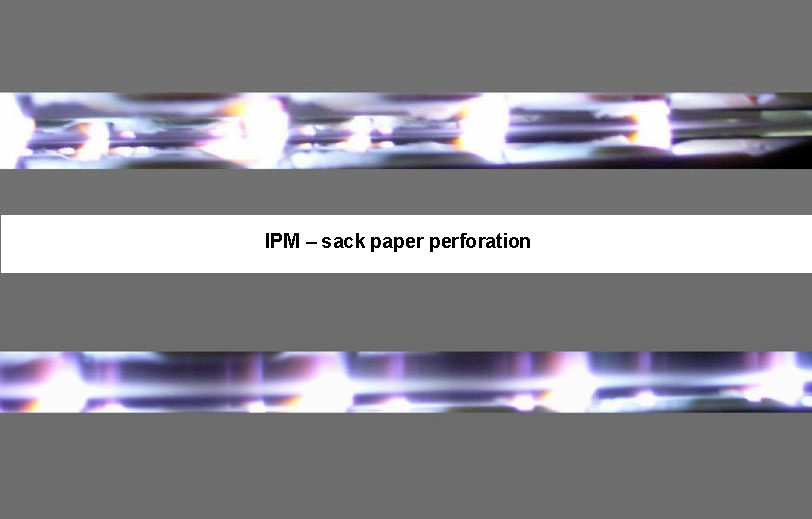
Dieser Trend wird sich für spezielle Produkteigenschaften und Anwendungen fortsetzen. Die state-of-the-art, industrietaugliche und im Dreischichtbetrieb zuverlässig arbeitende Nano Mikrocluster Perforationstechnik, deren Integrationsmöglichkeit in vorhandene Umroller- oder sonstige Bahnlauf- und Materialbewegungsanlagen sowie auch als völlig eigenständig arbeitende Produktionsmaschinen möglich sind, wird zukünftig neue Anwendungsbereiche erschließen und Produkte mit besonderen Eigenschaften entstehen lassen.
Durch Weiterentwicklungen von hybriden, modularen Schaltungstopologien mit IGBT, MOSFET, FRETFET oder HVFET zur Erzeugung stromgesteuerter Hochspannungsentladungsimpulse im Zeitfenster von 10 ns bis 15 µs und Pulsendladungen von 0.1 bis 3 mJ hat die Nanotechnologie und Submikroperforation auch im Bereich der Feinpapierveredelung und Verpackungsstoffverarbeitung Einzug gehalten. Auf die anderen zuvor genannte Applikationsbereiche ist dies für die beschriebene Mikroclustertechnologie übertragbar.
Details http://www.microperforation.com/igbt-esp-unit.html
Nano micro perforation of diverse running webs
Material webs such as cigarette-, mouthpiece tipping paper, filter-, coated special papers, force papers, bag papers or packing papers, bonded fabrics, spun bonded non-woven, technical textiles, fabrics, laminate, etc. with base weights from 20 g/m2 to up to 150 g/m2, up to 20 g/m2 LPDE coating films, are perforated electro-statically – ESP – nano/micro or laser or mechanical micro or macro for different application purposes.
For a better comprehension: Electrostatic NANO MICRO PERFORATION are statistically irregularly distributed, varying by size up to 40 %, and analogically, under LASER or micro/macro mechanical PERFORATION, evenly arranged in diameter about the same in size, at best non-inclined holes und rows of holes of diverse arrangement. For the human eye invisible electrostatic nano or micro perforations may be arranged in areas as well as in zones with specific distances within its web. The sizes of the holes range from 1 to 120 µm in diameter and hole sequences from 1.5 to 16 million pores per second.
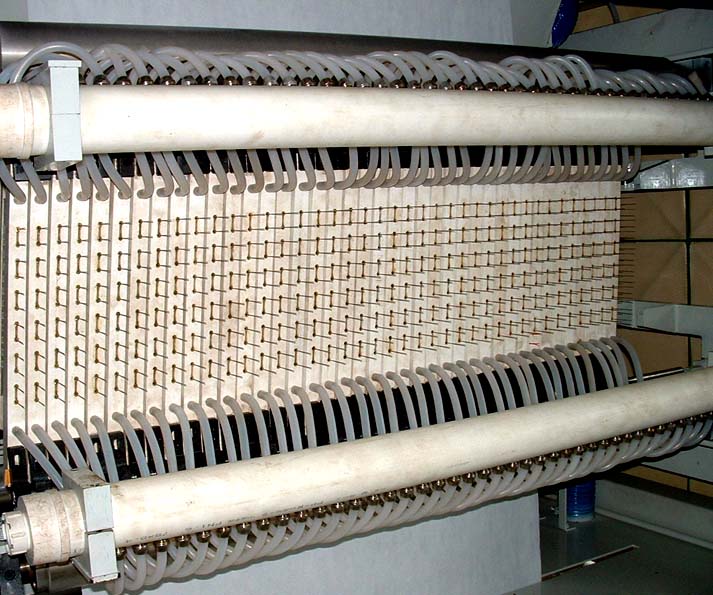
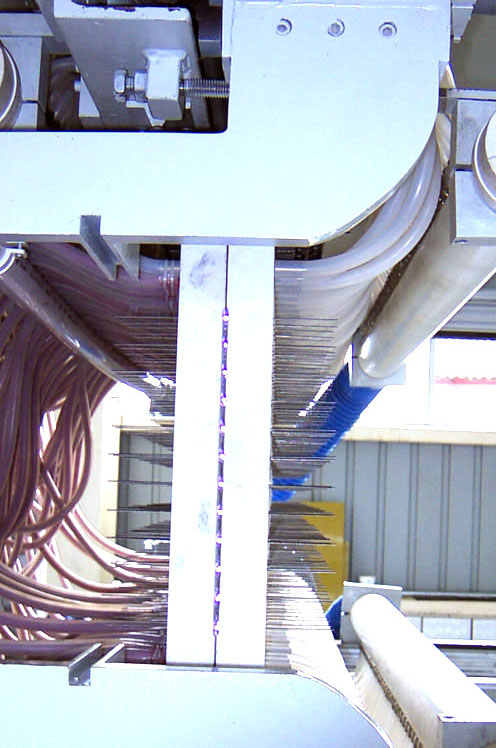
Arrangements of zones are usually carried out in width from 2 to 6 mm and pore density of 15 to 250 pores per cm2 whereas the perforation of areas results in pore densities of up to 2 million pores per m2. ESP perforations allow for porosity levels from 80 to 2500 C. U., width of webs from 100 to 2000 mm at web speeds of up to 500 m/min, depending on the porosity and material consistency in relation to its ability to perforate.
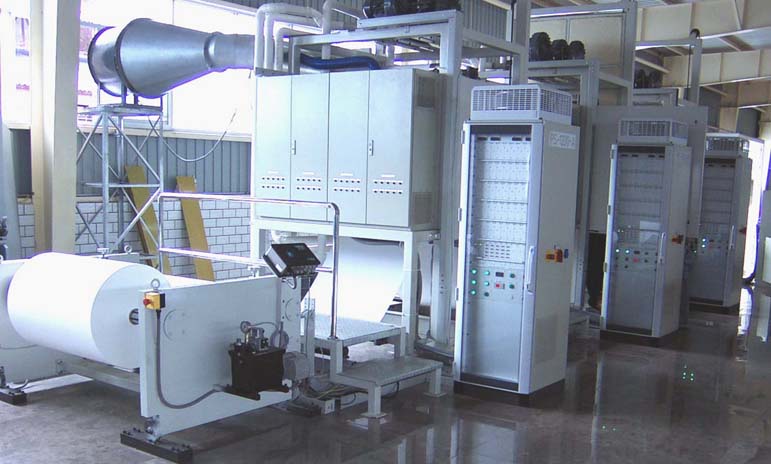
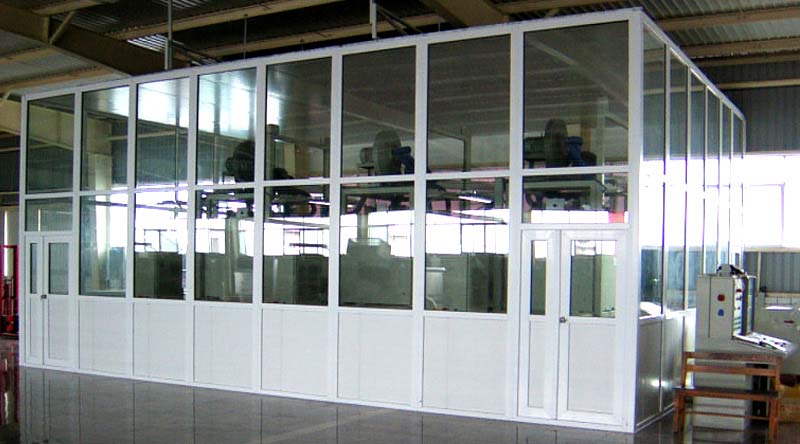
Laser perforation
Possible to perforate by pulsed or enlarged and focussed laser beams are hole sizes from 60 to 200 µm at density of holes of typical 10 to 30 holes per cm, hole sequences from 100,000 to 500,000 holes per second at a max. of 32 punctured rows by laser distributed over the width of the web with traditional systems or machine. Their porosity levels range from 100 to 3000 C. U., normally with web widths from 100 to 500 mm at web speeds of up to 600 m/min, depending on the porosity and material consistency in relation to its ability to perforate.
IPM owns development of LASER PERFORATION technology LPM-1 is patent grand and operates with quadruple beam inputs to a high power CO2 laser beam multiplexer to generate up to 200 individual laser perforation rows across the web, combines automatic laser perforation head positioning, focus setting, web speeds up to 400 m/min, web widths up to 2,000 mm, up to 4,000,000 holes per second, jumbo-roll-by-roll production, optical online permeability and perforation line positioning control, porosity feedback and other features. Each laser perforation lines are archive able from 100 up to 2,000 C.U.
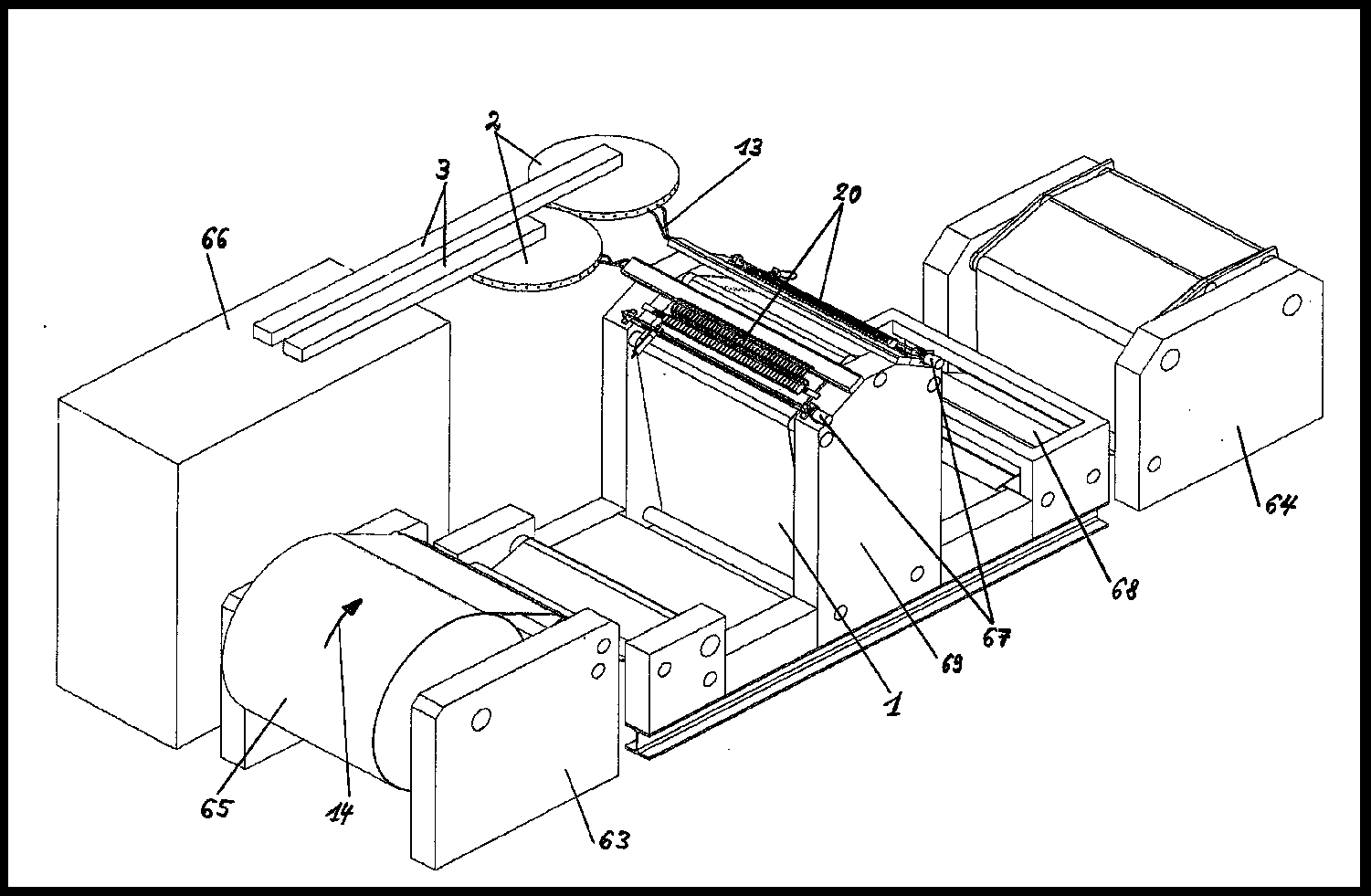
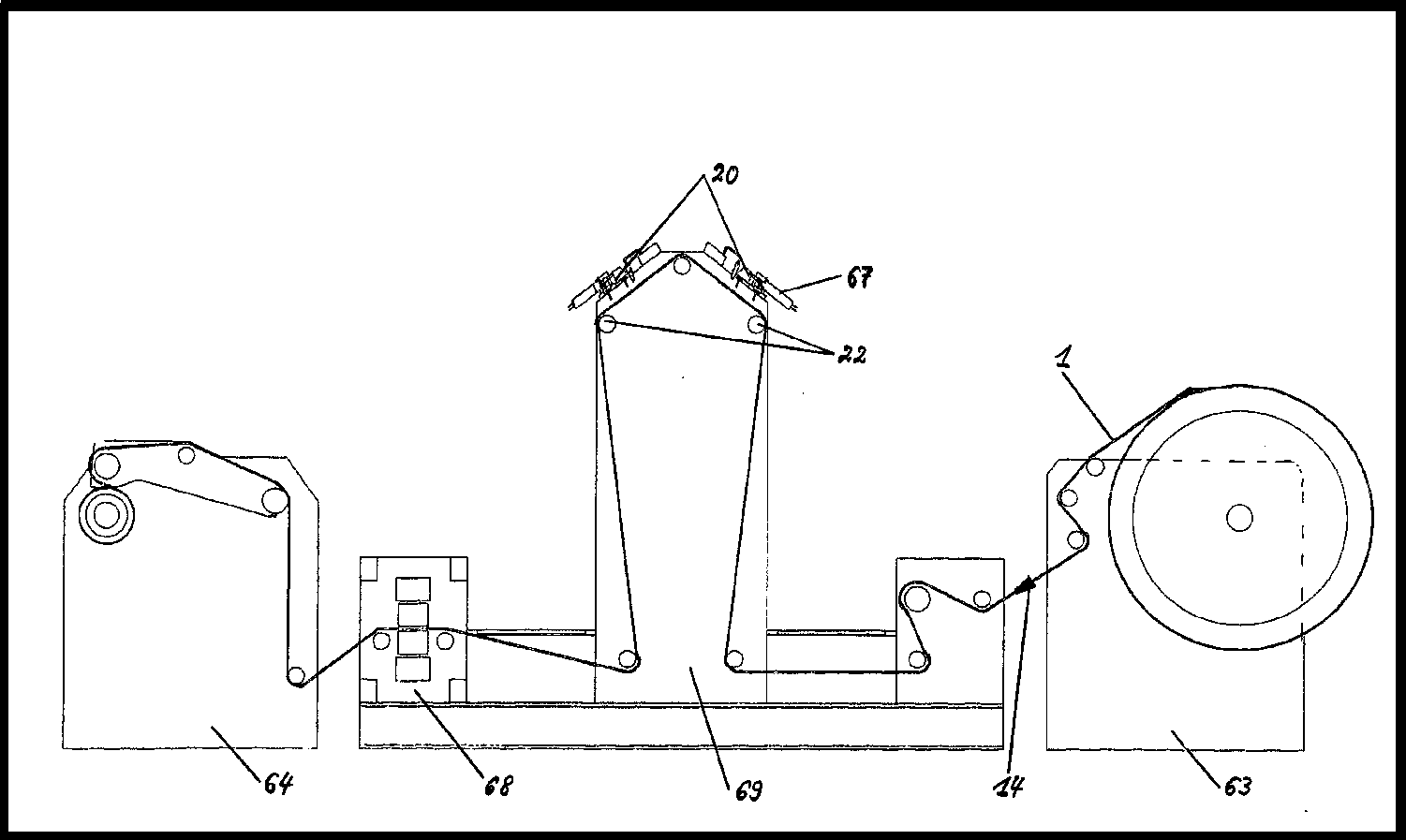
The
conception of high-power laser beam multiplexers enable many possibilities in
other industry application fields as cutting, cut-offs, welding, surface
finishing, drilling, polishing, forming, surface treatment, roughness
improvement, etc.
Each of the 200 single perforation head can be positioned across the running web or static positioned material. The automatic processes, equipments and devises opening completely new possibilities in industry, science, military or space laser application.
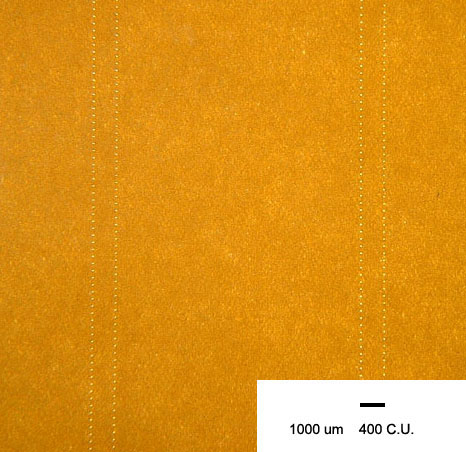

A new patent pending Micro Laser Line perforation technology MLL-1 generates sinus, waves, zigzags or other kinds of perforations designs as multiple pairs of micro laser lines in the web direction. Provide for tipping, cigarette, packaging or other kind of paper webs.
These special features of micro laser line perforation enables fundamental new product characteristic in perforation scripts, e.g. for mouthpieces with tipping paper on cigarette filters, products indication with visible perforation holes as brand name or company logo, anti counterfeiting designs, perforation cryptogram, etc. As well is that process to use by other material, industry and application field.

Ventilation of mass products
Electrostatic perforation has been used since 30 years for ventilation of non filter, RYO or filter cigarettes to create a directed and guided air bypass or Lindstroem principle. For this purpose, cigarette paper for some non filter or RYO cigarettes and almost every kind of filter cigarettes tipping papers are perforated electro statically OFFLINE in zones from 2.0 – 6.0 mm width or in rows with ONLINE or OFFLINE by use of slow, fast flow, sealed-off or SLAB CO2 gas or diode laser in order to reduce the harmful substances such as nicotine and condensate down to allowed values. Another effect is the possibility to control the degree of ventilation of Cigarettes.
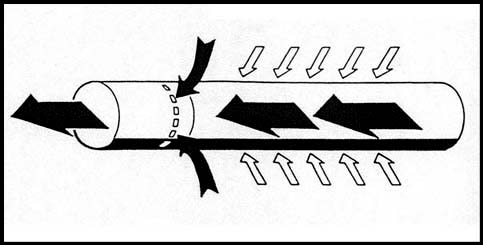
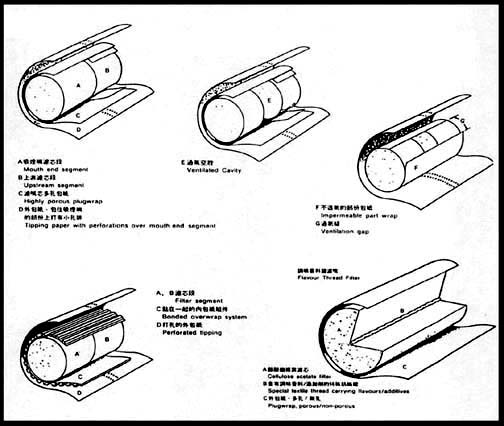
Online micro perforation, porosity profiling
Many years ago IPM had developed a multiple online electrostatic micro perforation OESP-1 units at cigarette making machines which was patent applied with EP0460369 and DE4018209.
http://www.freepatentsonline.com/EP0460369.html
The method and the device for electro-erosive perforation of cigarette paper basically operates with at least two pairs of electrodes which are ignited at the same time in such a manner that each perforation section is treated twice in order to provide a corresponding intensity of perforation, taking into consideration the duration of ignition and the web speed. In particular, the invention operates with at least four pairs of electrodes (I to IV), between which the web (10) of cigarette paper to be perforated is moved through. The cigarette paper is moved in the longitudinal direction of the cigarette to be produced later, the width corresponding to the circumference of the cigarette plus an overlap section for bonding. Perforating is carried out transversely to the direction of movement, that is to say an accurately defined zone section is produced around the circumference of the cigarette. The pairs of electrodes are arranged at a distance which corresponds to half the cigarette length (a, b, c) when four pairs of electrodes are used. The first and the third pair of electrodes are ignited simultaneously. A distance dependent control causes the second and fourth pair of electrodes also to be ignited simultaneously when the previously perforated sections have traveled the distance of half a cigarette length. Each section is perforated four times, the speed at which the web (10) can be moved being determined not by the spacing (half a cigarette length) of the pairs of electrodes but by the spacing of the pairs of electrodes in each case simultaneously ignited (one cigarette length). This provides for uniform, intensive and very powerful perforation and the cigarette paper treated can be continuously supplied to the cigarette machine for further processing in the longitudinal direction of the cigarette.
That electrostatic micro perforation process enables cigarette or tipping paper while cigarette making processes to reduce nicotine and condensate levels for non-filter and filter cigarettes as well. The OESP-1 devices opens fully new possibilities for cigarette or tipping paper ventilation during cigarette manufacturing by entire perforation cassettes integration into cigarette making machines as Max-S, Protos 80, Protos 90, Mark-9 etc.
Advantages during manufacturing
Compact all-over-dimensions, direct mechanical integration of perforation units, easy functional interfacing and full EMI acceptance in order of EN or NEC standards archiving high production efficiencies with controllable ventilation grades on highly automated cigarette making machines.
Liability and system investment
The ESP process OESP-1 has a high liability and is realizable with low investments and low running costs when compared with online macro or micro laser perforation processes. An online porosity control system OPSS-1 monitor continuously the air permeability, called optical online porovision or porosimeter, with a state-of-the-art technology to obtain a close-loop/feed-back to the perforation unit to keep ventilation grades constant.
Conclusion: Online micro perforation processes are possible to use for other mass products and application fields with full system integration in entire production lines as bag, sack, packaging manufacturing etc.
more details http://www.microperforation.com/online-perforation-cigarette.html
IPM - ONLINE LASER PERFORATION with patent grand high speed multiplexer DE102004001327
A – laser source and IPM patent grand multiplexer with 8 optical channels
B – bobbin unwinder and perforation heads
C – tipping paper strips with 8 laser perforation lines
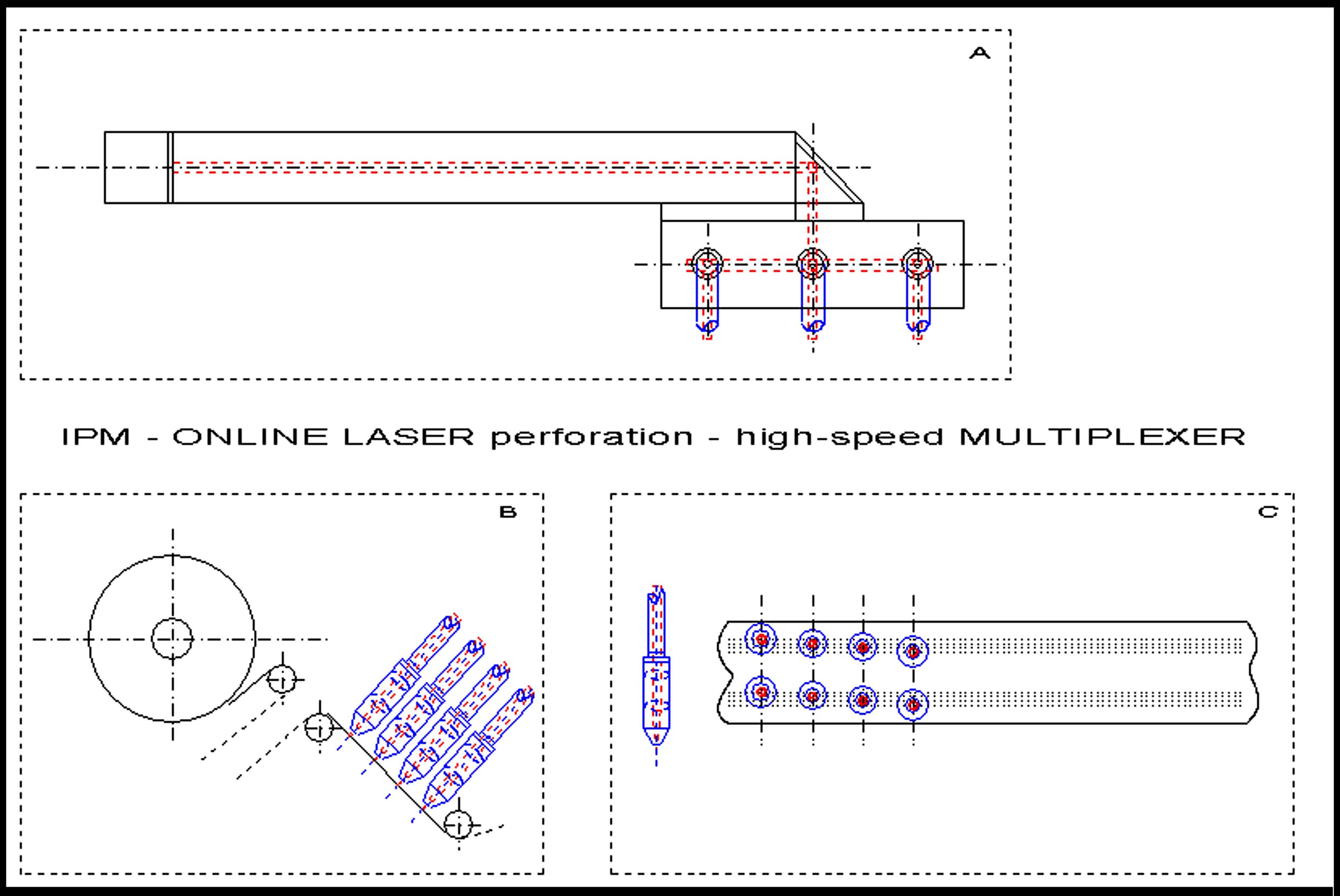
further information on request
Special applications and product properties with ESP electrostatic perforation
One of the foremost postulation which can be applied to many application purposes and products containing bonded fabrics, bag- or packaging papers, non-woven, etc. with gas or steam permeability but water impermeability will be found at the application stage of the ELECTROSTATIC NANO/MICRO PERFORATION TECHNOLOGY. Which means pore sizes from 0.5 up to 10 µm diameter by up to 5 million per m2. This is due to the water’s greater surface tension which hampers the permeation through the relatively small nano or micro pores. These and other physical advantages of the relatively small pores necessarily demand the application of the ESP perforation method because alternative perforation or processes are NOT feasible, too expensive or simply uneconomical and would not lead to a successful application.
To archive new ESP demands IPM developed/patent grand new electronic perforation circuits which working as upward converters with IGBT’s, MOSFETS’s or HVFET’s for power pulses from 1 µs up to 25 µs, high current peaks up to 300 Amps, base frequencies up to 200 KHz on ferrite transformers to generate 50 KVss to each sparking electrode.
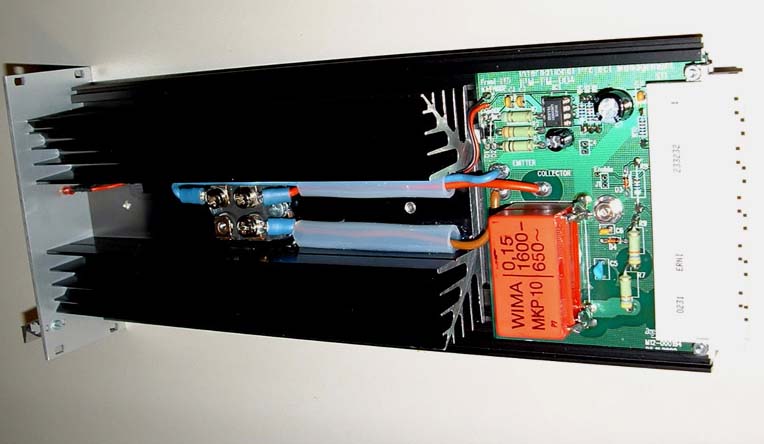

Sophisticated multi functional optical online sensor systems
IPM has developed a number of new, patent pending, stationary, scanning optical control processes, devices and systems for fast moving webs or fabrics to detect very precise and reproduce their specified product properties in online operation during production.
Introduction
OPSS-1 OPRL-1 vision control systems are equipped with multiple IR, NIR, VIS monolithic spectral color sensors, precision line lasers, CCD imagine devices, DSP, ATMEL and INFINEON sensor internal controllers, own firmware, high speed data link, at scanning speeds from 20–500 mm per second, at web widths up to 5000 mm, measuring gaps from 2.0-5.0 mm, optical inline detection of permeability, porosity, spectral transmission, opacity, extinction, particle absorption, porosities ranges from 80 up to 5000 C.U. (Coresta), respective from 50 down to 3 Gurley, position control of micro perforation lines with 0.1 mm accuracy, nano micro pores from 50 nm up to 200 micron diameter by up to 300 pores per cm2. With real time data determining of certain parameters, optical transmission, spectral grades, porosity integrals, envelope curves, internal calculated measuring values.
Thus direct with close loops and feedbacks to the power electronics of fabrics treatment units. Micro perforation or other system makes it possible to compensate any changes in web treatment parameters and their partial locations so that each jumbo roll as well single, quad bobbin sets can be produced quantity and quality controlled without intermediate stops in order of ISO 9001/9002 certifications.
Thus sophisticate, precise, liable, repeat accuracy, easy visualized, optical online measurement techniques archives perfect ways to control and convert pneumatic, fluid, gas, jet streams, static permeability, naturally porous grades, filtration levels, breathable or ventilation effects, etc. at fast moving webs. Their conditions can be easily met by using optical transmission technology thanks to described processing in fully online stationary or scanning control units, extremely small pore dimensions, high fabric speeds up to 1000 m/min by high repetition rates. That completely independent from base material properties as consistency, coloring, density, formation, pin holes, smoothness, stretching, shrinking, brightness, opacity, optical spectral property, gauging thickness weight, moisture content and other known influences.
Application
The electrostatic nano or micro perforation, including Co2 slab fiber yag excimer diode laser, other material going trough or surface treatment, as well for micromachining and nanotechnology, is usually used depending on quality at fine, rotogravure or offset printing, holographic or publishing paper, writing, magazine, newspaper, packaging, bonded fabrics, non-woven, filter, coffee, tea, bag, sack, craft, food, fresh fruit, force, reinforce, tipping, cigarette, plug wrap, fiber, facial tissues, toilet, decoration, wallpaper, gift, watermark, towels, bleached dyes shiny or clay, recycling, booklet, bible or other special paper, certain plastic films, foils, coating, laminating, extruding, Polyofine, Polysulfone, Elastomer, textile, Polymer or most of that varied types.
It is also used especially for additionally treating materials when aiming special characteristics by physical or regular process reasons cannot be achieved by other process technologies. Material base weights from 10 up 150 grams per m2 by thickness from 5 up to 100 micron are possible to use. Including defect inspection, process automation, moisture vapor transmission rate, abrasion resistance for lamination of waterproof and breathable fabrics.
Our state-of-the-art, industrially approved, sophisticated, compact, multi functional, optical online sensor scanning systems together or without electrostatic, laser perforation technology operates precise and reliable 24/7, are integrate able into existing rewinding, slitting, spooling, spreading, printing, labeling, complex production lines or other machines and other production processes as well. Also, they can be used as completely independent micro surface-all-over or zone perforation units. Fully new ranges of applications will be made available total new products with special features.
Optical online permeability or porosity vision control
Since naturally porous web materials or web materials to be perforated are processed with speeds of up to 600 m/min and web widths of up to 2000 mm are used, a pneumatic porosity measuring, hence measuring whilst touching the web are highly difficult. Further difficulties of pneumatic measurements are the disadvantages of rising of web tension, material abrasion, folding, leakage at measuring head, impurities, non linear processing and calibration problems.
Thus, optical measuring offers better ways for transmission measuring the pneumatic static permeability for naturally porous or nano, micro or macro perforated webs. The conditions mentioned above can be easily met by using the optical porosity measuring technology thanks to the mentioned product processing and online control, extremely small pore dimensions, relatively high track speeds and a good value repetition.
That full independent from principle material facts as consistence, thickness, weight, colouring, formation, smoothness, brightness, opacity, and other influences.
Therefore, IPM – International Perforation Management – has developed a number of new, patent pending, stationary and transverse optical measurement processes and systems which working with multiple colour sensors, a precision line laser, scanning speeds from 20 – 200 mm per second, porosity ranges from 80 up to 3000 C.U., perforation lines detection by 0.1 mm, nano micro holes sizes from 0.5 up to 2000 µm diameter and up to 250 holes/cm2 to determine all data in real time with an internal controller unit in order of multiple light transmissions and perforation profiles to determine envelope curves as well porosity integrals.
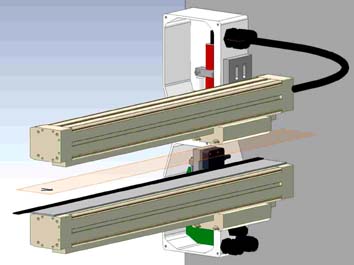
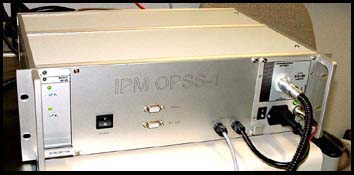
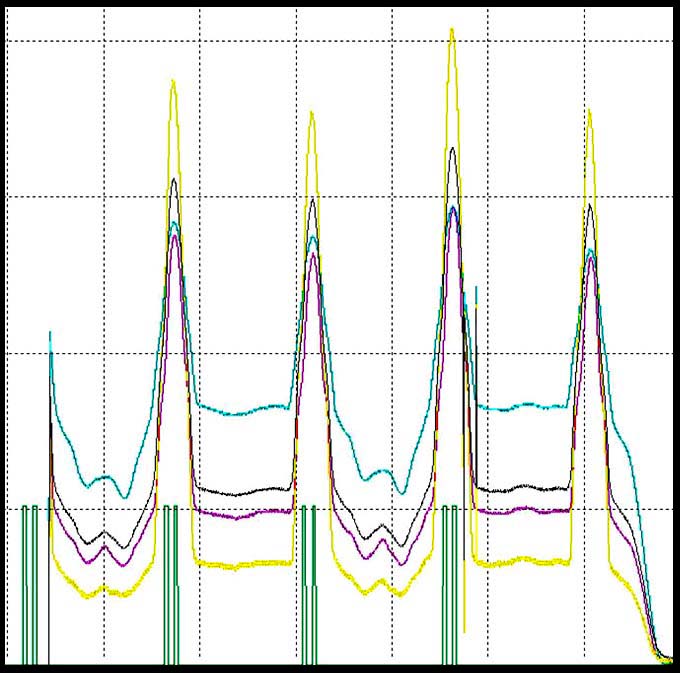
Thus direct feedback into the perforation system makes it possible to compensate any changes in terms of porosity and perforation locations so that each jumbo production roll up to 25,000.00 meters as well single or quadruple bobbin sets can be produced/controlled without intermediate stops and certificated in quantity und quality on their end.
Future prospects
The electrostatic ESP nano or micro perforation usually applies within ranges of the refinement of fine paper, packaging webs, bonded fabrics, non woven, filter paper, bag or force paper as well as special paper webs of most diverse kind especially when additionally treating course materials for achieving special characteristics which for physical or process reasons cannot be achieved by other process technologies.
Our highly modern, industrially approved ESP perforation technology operation which even can be relied on when operated 24/7 can be integrated into existing rewinding course devices or other course devices. Also, they can be used as completely independent perforation devices.
New ranges of applications will be made accessible as new products with special features will be developed.
IPM – International Perforation Management – has developed many different kind of laser or electrostatic perforation processes especially for new product characteristics. Their devices, systems and machines are in use world-wide.
High power laser multiplexer for industry applications
wide web micro perforation machines LPM-1
with tipping, packaging paper, plastic films, other material substrates
Patent granted DE102004001327
Patent download http://www.microperforation.com/englishengineerreport.html
Introduction
A German-Thai-Chinese high-tech engineering company offers completely new possibilities with high power CO2 laser multiplexers for wide web applications as well for micro perforation with JUMBO-ROLLS with up to 200 individual laser perforations rows, automatic laser perforation head positioning, focus setting, web speeds up to 400 m/min, web widths up to 2000 mm and more. Several types of material web, e.g. paper, packaging, coated sheets, films, foils, metal sheets and other types of substrates can be micro perforate or treated. We are seeking for R&D, science or industrial partners in licence agreement, technical cooperation, new product or applications in USA and EU.
Working principle of high-power laser multiplexer
Through 2/4 KW dual laser beam sources, two or four level high-power laser multiplexers designed for certain wave lengths from 500 nm up to 10.6 µm, new two level rotary cubic elements, or two quadruple beam splitters or polygons bent facets, using of new developed CO2 hollow waveguide fibres realizable up to 200 optical single channels with assembled focus heads direct on the production web material. Without very extravagant, expensive of optical elements, alignments, lenses, divert mirrors, extended mechanical designs, etc. Pulse sequences up to 4,000,000 per second, single shoots between 0.5 up 3.0 mJ, time windows from 1 µs up to 100 µs and e.g. holes sizes from 1 µm up to 100 µm or microns are possible.
Description for wide web micro laser perforation
Wide web laser perforation processes, equipment and machines permits e.g. tipping or packaging paper web width up to 2000 mm and more, up to 200 single laser rows across the web by holes sequences up to 4,000,000 per second. Depends of material consistence, perforability, holes sizes and densities web speeds up to 400 m/min, web widths up to 2000 mm, 25,000 meter roll-by-roll, automatic perforation head positioning and focus control, up to 20 bobbins in one cut which means up to 160 bobbins are now archive able without machine downtime. In addition the key element and integrated OPSS-1 porosity/position scanning system complete the feed-back and robot control system. The optical online multi sensor porosity/position control system OPSS-1 is located just behind the laser perforation section and rewind stand to control the perforated material web continuously and supply the data stream to the master PC and close loop.
Highly automated and motor adjustable focusing optics one each perforation heads are free position able across the material webs. That automatic procedure and their robot devices open now fully new ways in wide web laser perforations or other material treatments in high speeds ranges, large number of optical single channels and high pulses or holes sequences.
In addition with the optical online control systems OPSS-1 porosity, hole qualities and all hole row positions are continuously controlled and differences immediately compensate over master PC controlled feedbacks to the perforation system. Production rolls and products are finished without intermediate stops in high qualities and large quantities.
Other application
The new high-power laser beam multiplexer open many other application fields, e.g. cutting, cut-offs, welding, surface finishing, drilling, polishing, forming, surface treatment, roughness improvement, etc.
Each of the 200 single perforation head can be positioned across the running web or static positioned material substrate. This automatic processes, equipments and devises open up completely new possibilities in industry, science or military or space laser applications.
MLL-1 nano micro laser line perforation or material treatment as paper, metal or many other substrates and applications
Patent pending DE102004012081
Introduction
The German engineering company offers an innovative type of NANO and MICRO LASER LINE PERFORATION technology - that is world wide new. That type of perforation for web, sheet or substrate materials allows a high level of freedom in holes positioning with a variety of perforation designs as wave shapes, zigzag lines etc.
The special characteristics of the technology create fundamentally new product properties. It is adaptable to existing systems. They are looking for industrial partners of license agreements and/or technical co-operation.
Description
Conventional off line laser perforation machines and processes generating straight hole lines in the web direction of the cigarette tipping paper – as coaxial shape - or other material sheets. The exception is spray laser designs with randomly distributed holes in certain zones such as electrostatic perforation.
The new nano micro laser line perforation technology generates sinus, waves, zigzags or
other kinds of lines of perforations hole in web direction as pairs of micro
laser lines.
Tipping paper is the paper around the cigarette filter.
Various new elements move each single laser beam in a sideways direction.
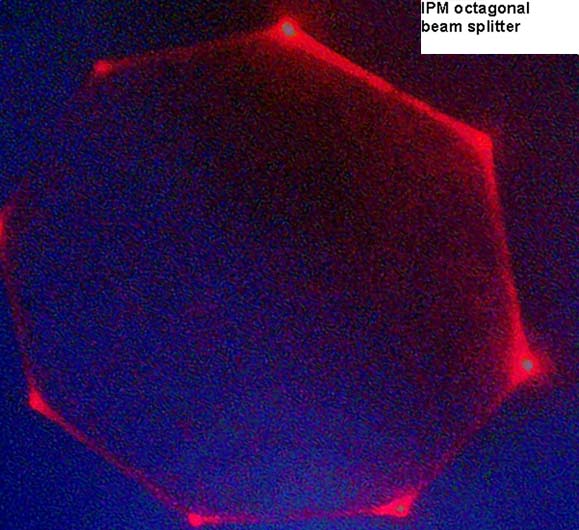
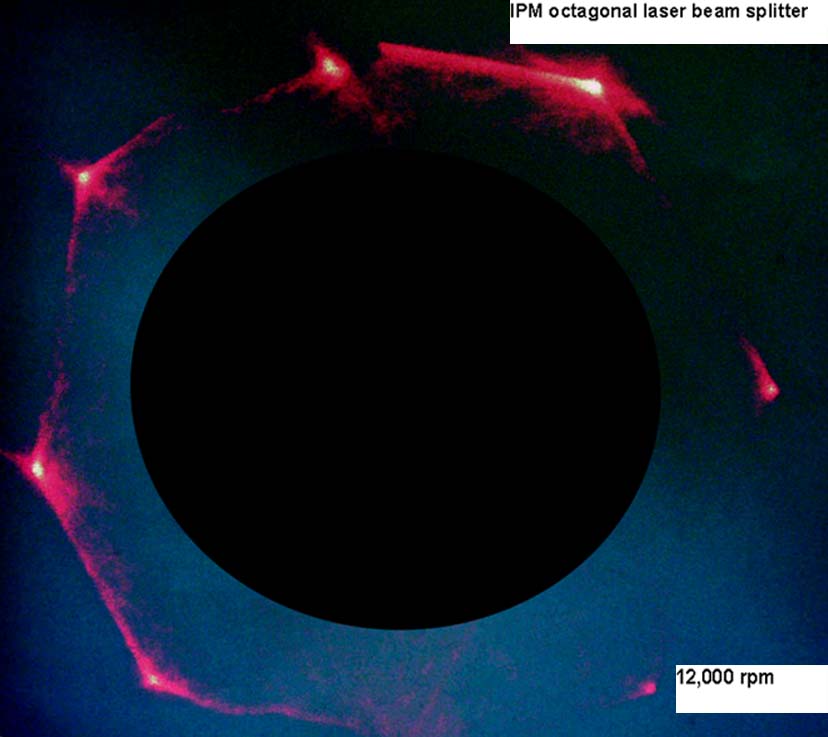
Product
and process advantages
Existing and new laser perforation machines/systems
Applications and summary
The nano micro laser line perforation MLL-1 of web or sheet materials - such
as any kind of paper, metal, insulation, plastic - allows a high level of
freedom in hole positioning freedom with different perforation designs in the
form of waves, zigzag lines or other which result e.g. in optimized air
distribution characteristics in cigarette filters.
The special features of the nano micro laser line perforation create
fundamentally new product properties, e.g. final products for mouthpieces with
tipping paper on cigarette filters or other products of this kind which indicate
a brand name and is recognize able for everyone - if the holes are visible or
can be seen with a magnifying glass. Or anticounterfying and non copy able.
Just like a perforation cryptogram. This is performed by means of Piezo oscillators for laser beam deflections, as actuators with added metal optics or asymmetrical, rotary reflection cones. Mathematical functions and sequences are coupled by web speed.
The points of envelope curves of the selected perforation shape are calculated
and computed beforehand for the single holes and hole groups and monitored
during the perforation procedure by a programmable control system.
Innovative
Aspects
MLL-1 nano micro laser line processes allow many applications with certain
beam diverts.
Main
Advantages
Use of new beam divert elements allows easy and attractive modifications to
existing laser systems.

IGBT dual high power, high frequency, high voltage switching converter units
Patent granted DE10328937
Introduction
On a high level operate engineering company develops a dual, high power, high frequency switching unit which works with hybrid drives, compact EMI safe semiconductor stages, supporting capacitors, high voltage ferrite transformers to generate HV short pulses and sparking groups. Advantages are based on uses of standard circuits with extended semiconductors for e.g. nano, sub or micro perforation applications, corona treatments etc. The company is looking for science or industrial partners who are interested in a licence agreement and / or technical co-operation.
Working principle
Industry application of electrostatic perforation for fast running paper webs using IGBT, MOSFET or HVFET semiconductor power stages. These circuits working as upward converters with power pulses in ranges from 5 µS up to 25 µS and high current peaks up to 300 Amps on a serial connected inductivity and loading capacity that the secondary ferrite transformer coils supply sparking electrodes up to 50 KVss.
The circuit works itself with alternating clock frequencies and changes of pulse widths a common load condenser and coupled primary inductance of a ferrite high voltage transformer as upward power/pulse converter and non resonance frequency operation.
A safety circuit logic and two hybrid drivers allows a alternately switching of semiconductor A and B which generating higher operation frequencies and power levels meanwhile the electrical and thermal conditions remains on each in the same range as a single switching unit.
Circuit advantages
A controlled pulse timing into a certain time window with a constant or variable frequency generating hole sizes and hole sequences with high voltage sparking through the material webs by nano or micro perforation. The repeating frequencies of the entire circuit can up to the double switching frequency as of each semiconductor stage.
A changeable current in the spark channel are feasible with total switching frequencies up to 150 kHz. And in the same time the dual semiconductor switching unit allows a double power level as just only with one switching element is possible.
Dual IGBT, HVFET or MOSFET semiconductors in high power, high current, high voltage circuits obtain in electrostatic nano, sub micro perforation, corona treatment or other switching application frequencies up to 250 KHz, power level up to 30 KW and more. Higher power efficiencies and harder switching periods are further advantages.
In conclusion the approximately double frequency and power level operation obtains higher switching efficiencies, much more perforation power or higher corona treatment levels which are depend of the industry application.
Nano, Sub Micro Perforation
Perforation results are now achieve for nano, sub and micro perforation of flexible webs with ultra small pores and products made of these materials. Materials finishing are of interest for numerous demands in the field of packaging, in filling, non-woven industry, technical and science applications, etc. For many years fine and other paper webs with base weights between 20 up to 150 g/sqm have been perforated electro statically in large surface all over areas or zone designs of 2.0 – 6.0 mm width.
Pore sizes from 0.5 µm - 60 µm or 1 to 100 microns, pore distributions of up to 4 Million per sqm in area perforation or respectively 3OO holes per sqcm by zone perforation and hole sequences up to 16 Million per Second can be reached. Air permeability or porosity ranges are among from 50 up to 2,500 C.U. (ml/sqcm/min) respectively 3 to 50 l/sqm/sec. (Franksystem) by paper web speeds up to 450 m/min and web widths up to 1,200 mm are archive able.
Electrostatic perforation processes and machines, corona treatment, surface treatment, high power switching devices, power supplies, AC&DC and other switching converter systems, drives, etc. Fine paper, cigarette, packaging or other fine paper industries, corona system manufacture, switching device manufacture, high-power converter equipment, AC/DC, DC/AC industry etc.
The new dual semiconductor circuit design allows applications to build hybrid drives, semiconductor high-level stage, upward, downward or other converters or generators which operating with supporting capacitors, high-voltage ferrite transformers in an extremely compact and modular design. Several advantages are the high efficiency of pulse/power transmission and energy ratios.
Traditional corona or other type of medium generators up to 30 KHz operation ranges are easy to modify to a double frequency and power levels operation.


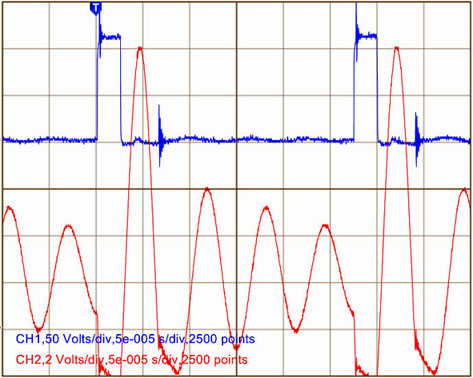
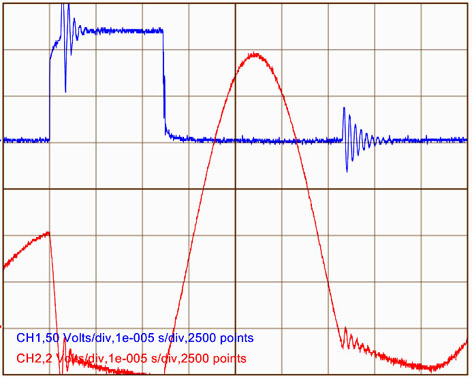
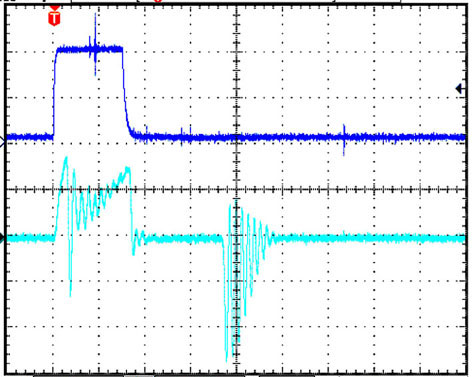
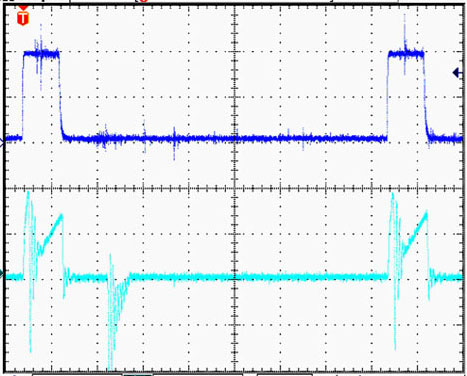
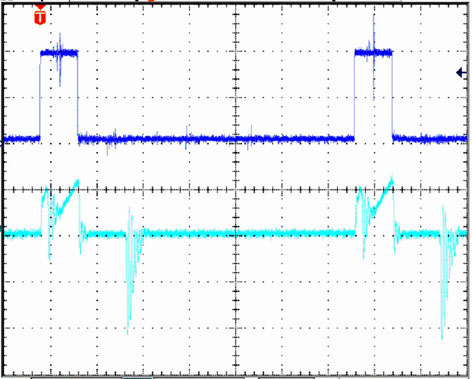

Optical online OPSS-1 porosity permeability vision scanning systems
Patent pending DE10251610 – China patent grand 200310104764
Introduction
A German-Thai high-tech, engineering company has developed an optical online porosity or permeability scanning system. It works with two different multiple sensors units, i.e. precise line laser, colour sensors and internal controller unit for real-time positioning and porosity control in light transmission mode whilst scanning across the fast running webs up to 600 m/min.
The main advantage compared to existing technologies is the measurement of perforation zone/line positions and porosity levels in the same time while the scanner system across the running material web up to 2000 mm width.
Science, R&D, Universities, industrial partners for a licence agreement and / or technical co-operation are sought.
Working principle
The porosity control of natural porous and/or perforated web material in laser or electrostatic perforation systems which are produced in speed ranges up to 600 m/min and web widths up to 2000 mm is difficult to measure with pneumatic systems because of following disadvantages: web tangency, web toughing, material flaking, formation of folds, dust and dirt entering the system.
These difficulties can be overcome with stationary or scan, optical porosity measurement systems for porosity ranges from 80 up to 5,000 Coresta units (ml/2cm2/min) respectively 3 to 50 l/m2/Sec. (Franksystem) by nano, micro or macro holes sizes from 0.5 up to 500 microns and hole densities from 10 macro holes per cm up to 400 holes per cm2
The optical online porosity control technology is designed to scan perforation zones with a multiple sensor and their positions with a precision line laser to determine all data in real time with an internal controller unit. It controls roll material or bobbin formats, either as a stand-alone unit or mechanically coupled with existing scanning units which measure the material weight, thickness, opacity, density, brightness, smoothness, formation, etc.
By laser and electrostatic perforation in bobbins and wide paper web formats optical online control processes and their devices are indicated with transverse movements across the web and simultaneously collections of perforation positions and porosities by two different sensor systems.
Both measuring systems move transversely between 50 up 400 mm/Second over the fully web width. They consist of a line laser detect the quality and position of single holes, groups of holes or defined perforation zones into the measuring gap of 5.0 mm. At the same time, the multiple light transmission sensors monitor all porosity profiles and determines envelope curve and calculate the integrals.
Applications and Advantages
Thus direct feedback into the perforation system makes it possible to compensate any changes in terms of porosity and perforation locations so that each jumbo production roll up to 25,000.00 meters as well single or quadruple bobbin sets can be produced and controlled without intermediate stops and certificated in quantity und quality on their end.
Natural porous or perforated web material as cigarette, tipping, plug-wrap, filter, packaging, non-woven, flees, coated paper as well micro or macro perforated plastic films as BOPP, LDPE, PP, EVA, HDPE, etc. are controllable with the OPSS-1 scanning system.
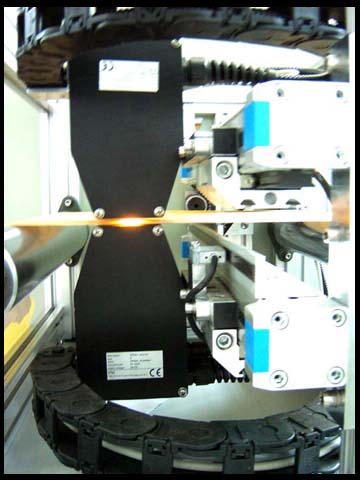

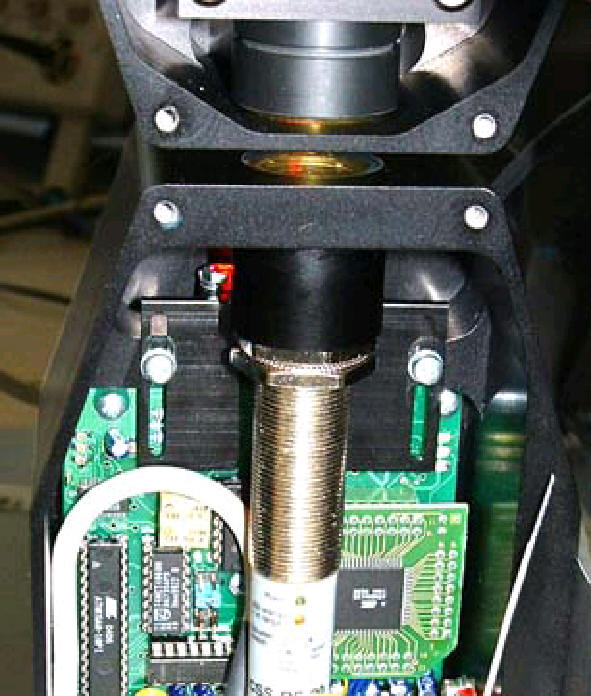
In-situ dyne and surface tension control at running plastic films or other substrates patent download http://www.microperforation.com/englishengineerreport.html previous patent application DE19543289 - download ODSTM-1-PATENT
Dyn control
Described is a method and device for optical inline tough less surface
tension control ODSTM-1 by which the fast moving substrate runs through the
measuring gap. It’s transmitted with a chromatic beam and spectral selected
light source were two optical channels are displaced and polarized by 90 degree
to each other. Both optical axles are precise and motor driven shift able in
certain angles from 25 up to 65 degree. The spectral light photons, transmission,
extinction, absorption grades are detectable by two optical CCD imagine vision
devices which are integrate in the sensor case on the other side of the
substrate.
Material
Moving substrates means plastic foils, flexible, high-tech films, laminate, coating, bonding, labeling, co-extrusion, BOPP, LDPE, LLDPE, HDPE, MDPE, MAS, MEV, PET, FEP, PP, PE, PS, PO, EVA, PTFE, PVC, PTFE, DPC, BOPS, Vinyl, Polyester, Wrapping, Olefin, self-adhesive tape, high strength, cross-laminated, adhesive-coated films, reflective or magnetic sheeting, automotive tape products, inkjet media, Polyethylenex, heat sealing, sewing of plastic film, pressure sensitive tapes for the entertainment industry, graphic and specialty arts for general industrial and electrical applications, building or engineering industry, photographs, masking or printable plastic films, flat or corrugated rigid foamed thermoplastic sheets, polycarbonate, acrylic, PETG.
Extruded or polished cellulose, optical grade polycarbonate, sheets for IR or laser protection, welding filter grade sheets, films for video, imaging, capacitor or thermo transfer applications, foamed polypropylene film with decorative ribbons, binary-oriented polystyrene sheets, multi layer co-extruded film, high impact PVC and PETG, polyimide film, tape and flat films for aerospace automotive medical agriculture marine automotive household commercial domestic construction industry, municipal and leisure applications, clear matt semi-matt finishes or colored, micro-porous membranes for use in alkaline lithium batteries, fuel cells and filtration equipment. By gauges from 10µ to 100µ, fabric widths up to 10,000 mm and web speeds up to 18 meters per second.
Optical properties
Material specific wavelength selection between 1200-1800nm, material specific finger prints, molecular spectral properties, transmission grades, optical angle scanning, Lambert Beersche law determining, ultra low level stray scatter light detection, polarization, slot diaphragms, transverse displacements control the light beams along/far from the optical X and Y axes. The results are extreme scattering, diffraction, NIR, IR, stray light photons generation into the layer areas at both sides of the moving substrate.
Their reflected and transmitted light intensities enables the determination by defined formulas and data matrixes the surface tension values in ranges from 28-62mN/m which are direct associate and bond to real static values for Statistical Quality Control (SQC).
And this entirely independent of the material specific influences as like surface consistency, thickness, density, weight, opacity, coherence, filling, stretching, shrinkage, structure, co-extrusion, polar grouping, temperature, intrinsic motivation or viscosity, hydrophobia, hydrophilic molecules, hydrogen, photonics, mol mass, moisture, water steam proof, bi-layer, polymer, patterning, nanostructure, irradiation, isotopic, catalyst, multi atomic, coherence, absorption, photo mask effect, roentgen, X-ray, radiation, resonance bands, REM, TEM, FIC, IEC, ESCA electron spectroscopy for chemical analysis ASTM or ATR method, property, ellipsometry, opto-acoustic photonic liquid effects, pre material treatment as corona, plasma, flam treatment.
Specific information by website links and patent resources.
The former patent application DE19542289 A1 concerns a method and device for optical dynamic, i.e. a non-contact, in-line surface-tension / surface-energy measurement for running substrates whereby the detection can be in the transverse-direction or in the running-direction of the web.
In the context of this invention, running substrates or moved web material is to
be especially understood as being plastic films like PE, PP, LDPE, HDPE, BOPP, LLDPE,
EVOH, PTFE, PET, PS, PMMA, PBMA, PVC, PA and also laminated or coated film or
paper webs which still show a measurable optical transmission in the wavelength
range of 1200 to 2200 nm.
A higher material wetting capacity, respectively, a higher material adhesion capacity, which can be achieved by increasing the surface tension, is demanded in many application cases for better printability, coatability or adherence capacity during the manufacture, finishing, printing and processing of running substrate webs.
Described is a method and device for optical dynamic in-line surface-tension measurement in ranges from 30 dyne up to 60 dyne in which a substrate web running vertically through a measuring gap is subjected to a chromatic light transmission from two optical channels displaced by 90° to each other. This light transmission is detectable by two optical detection systems located on the other side of the web.
Material specific wavelength selection, light transmission angle changes,
polarisation slot diaphragms and transverse displacements of the light beam
feeder along the optical X-axis result in extreme scattering and diffraction of
the IR light photons in the boundary layer area on both sides of the sub-nano
layer within the substrate web. Their transmitted light intensity enables, after
detection and evaluation, the determination of a direct relationship to the
absolute surface tension.
And this entirely independent of the material-specific influences like: material
and surface consistency, crystallinity, thickness, density, structure, polar
grouping, temperature and type of pre-treatment.
Introduction
Non-contact, realtime and in-line operation surface-tension
or surface-energy dyne - measuring systems for running webs as like plastic
films in general, coatings, laminates etc. does not exist world-wide.
Due to the broad application field of surface-treated
or surface-non-treated webs of plastic film, non-woven fabric, laminates or
coated paper, there is unimaginable market potential here in respect of the
in-line process measuring of the surface tension - dyne - and an in-line control
of the dyne treatment level and moderate quality control.
Various
companies from the abroad are serious interested in project cooperation, system
development, prototyping and test, manufacturing and world wide sales,
system purchasing and license in respect of the ODSTM-1 Process Measuring
System.
Actual projects situation of the ODSTM-1 development project
Further information concerning publications, patents and engineering reports are specified in the above mentioned applications. Several spectral measurements as well the feasibility study with well known optical institutes are positive done. Furthermore some significant modifications and breakthrough of the base ODSTM-1 measuring process with the using of state-of-the-art monolithic spectrometers and PC support. Specific information about the actual development and project status of the ODSTM-1 system on request.
Concerning the actual ODSTM-1 development and project status after certain developments
with known optical institute are large numbers of specific measurements with a monolithic spectrometer in a wave range between 1200 – 1600 nm positive done
all measurements where based on the detection principle which is described in the former patent application.
used are non-treated LDPE films in 70 and 90 µm thicknesses and 28 mN/m
the comparison is used the same LDPE films with one side corona treated with 38, 48, 52 and 60 mN/m
their test results where positive with a good prospect to going further in that way
Base data of Opto-Dynamic Surface-Tension Measuring system ODSTM-1
· web widths : up to 6000 mm
· web speeds : up to 600
m/min
· substrates : PE, PP,
HDPE, LDPE, PET, EVA, BOPP, etc.
· surface-tension measuring range : 30 - 55 mNm
· resolution, respectively, reproduction : +/- 0.5
mNm
· single-sided or
double-sided measurement of the treated or untreated sides of the
film
· IR wavelength range :
1200 nm - 1800 nm
· mode of
operation : dual scattered-light/multiple-sensor system with variable
wavelengths in transmission mode
· measuring method : similar to ellipsometry
· measuring gap : approx. 5 - 20 mm
· stationary and/or web-traversing measuring
head
· optical fibre waveguide
feed to measuring head system
·
spatially remote, highly-stable IR light source with beam
processing
· wavelength
variation via a monolithic optical converter
· industrial PC, multiple-processor system, data
recording, data analysis, product documentation, statistics, etc.
· actual-value output : analogue 0 - 10 V via
optical fibre or serial RS 232, etc.
CONCLUSION
Described is a
method and device for opto-dynamic in-line surface-tension measurement in which
a substrate web running vertically through a measuring gap is subjected to a
chromatic light transmission from two opto-channels displaced by 90° to each
other. This light transmission is detectable by two optical detection systems
located on the other side of the web.
Material-specific wavelength selection, light transmission angle
changes, polarisation slot diaphragms and transverse displacements of the light
beam feeder along the optical X-axis result in extreme scattering and
diffraction of the IR light photons in the boundary layer area on both sides of
the sub-nano layer within the substrate web. Their transmitted light intensity
enables, after detection and evaluation, the determination of a direct
relationship to the absolute surface tension.
And this entirely independent of the material-specific
influences like: material and surface consistency, crystallinity, thickness,
density, structure, polar grouping, temperature and type of
pre-treatment.
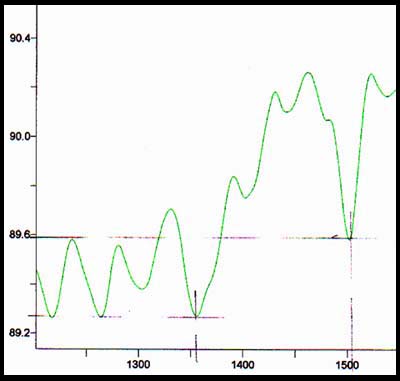
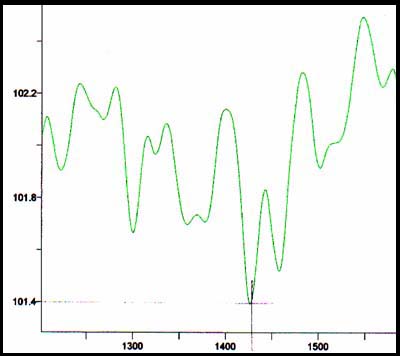
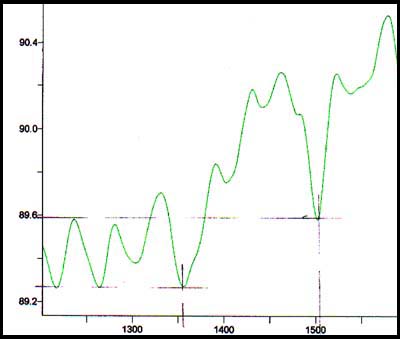
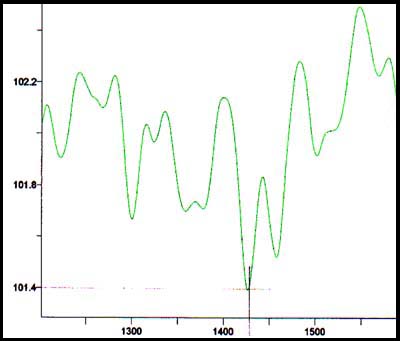
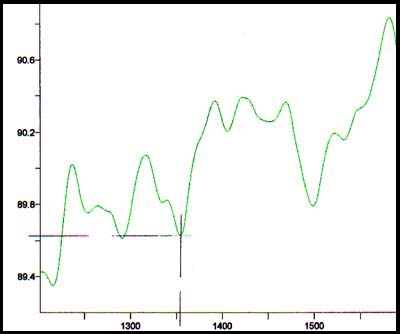
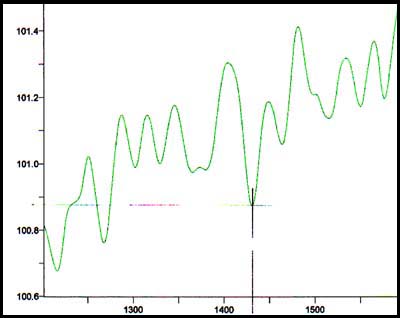
For more information please visit our websites